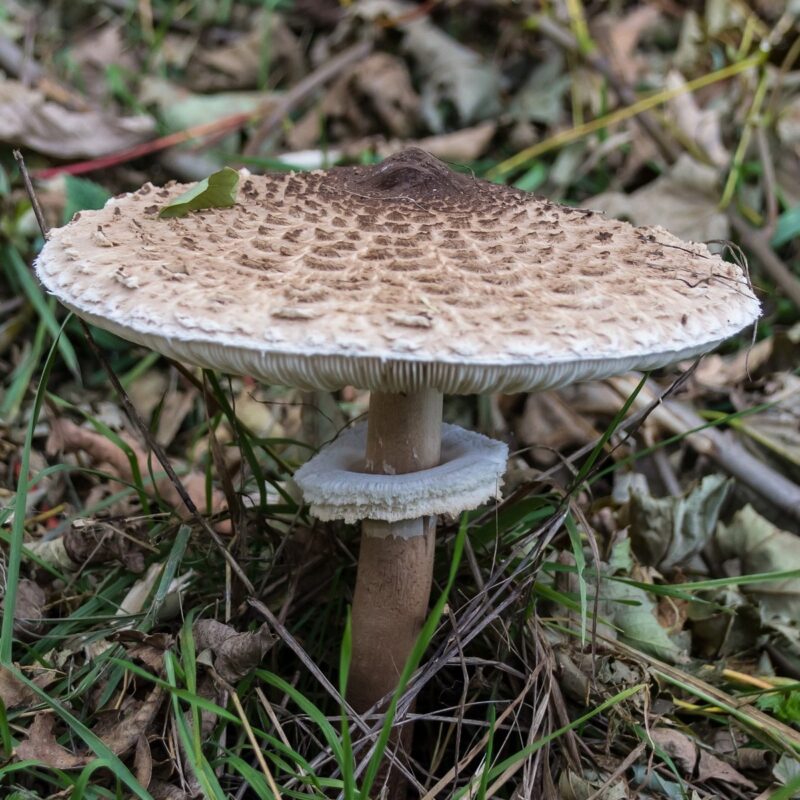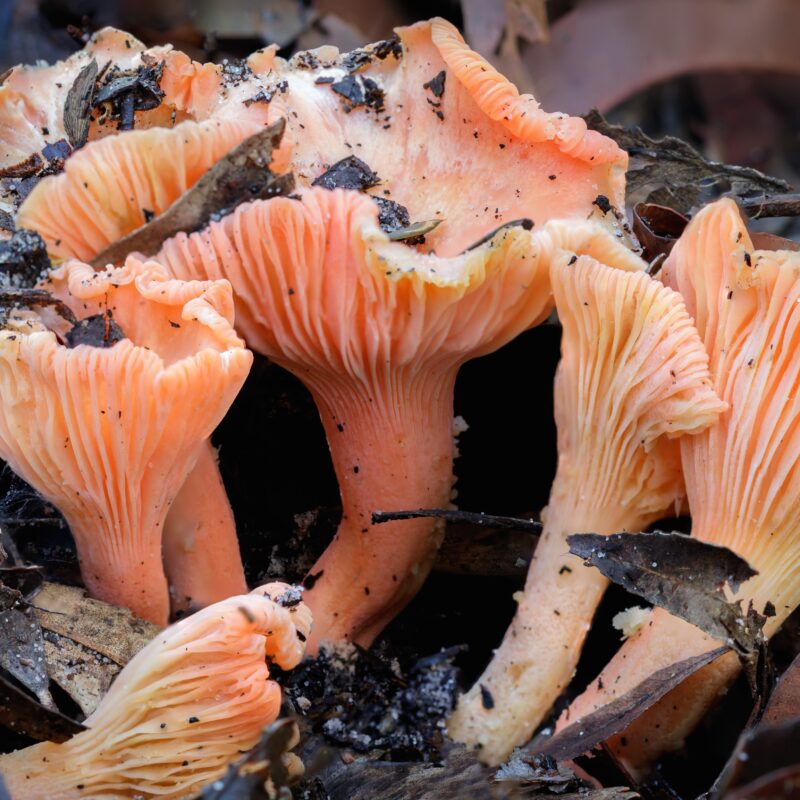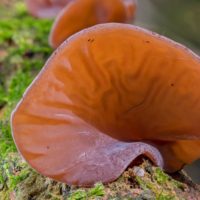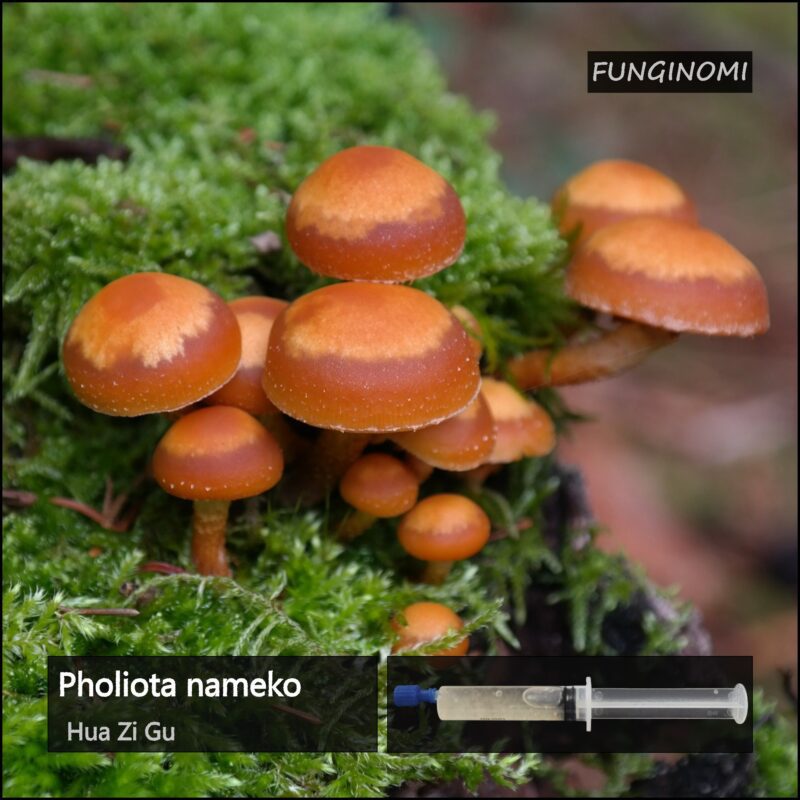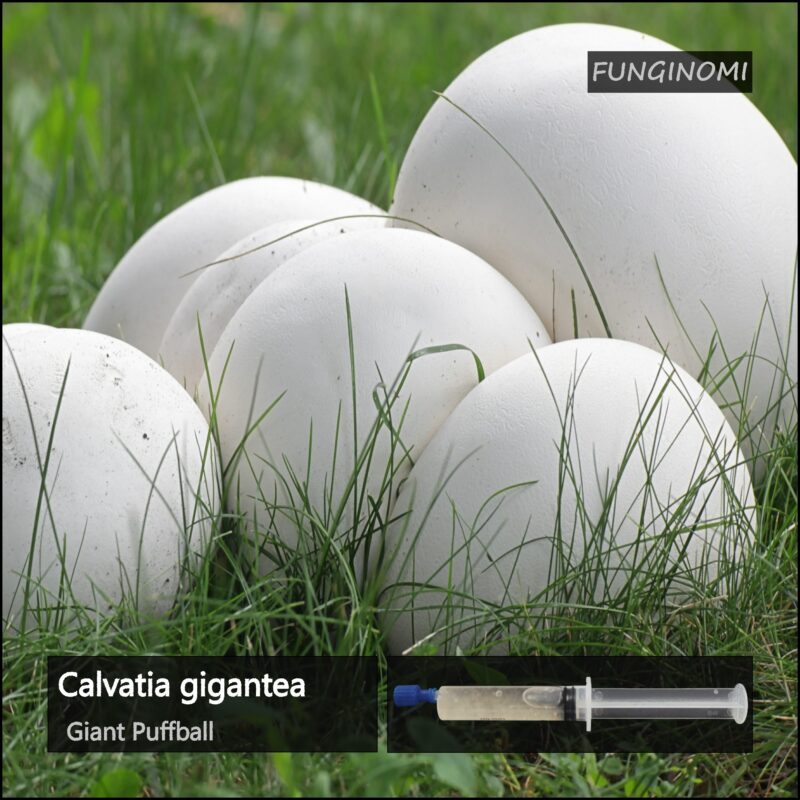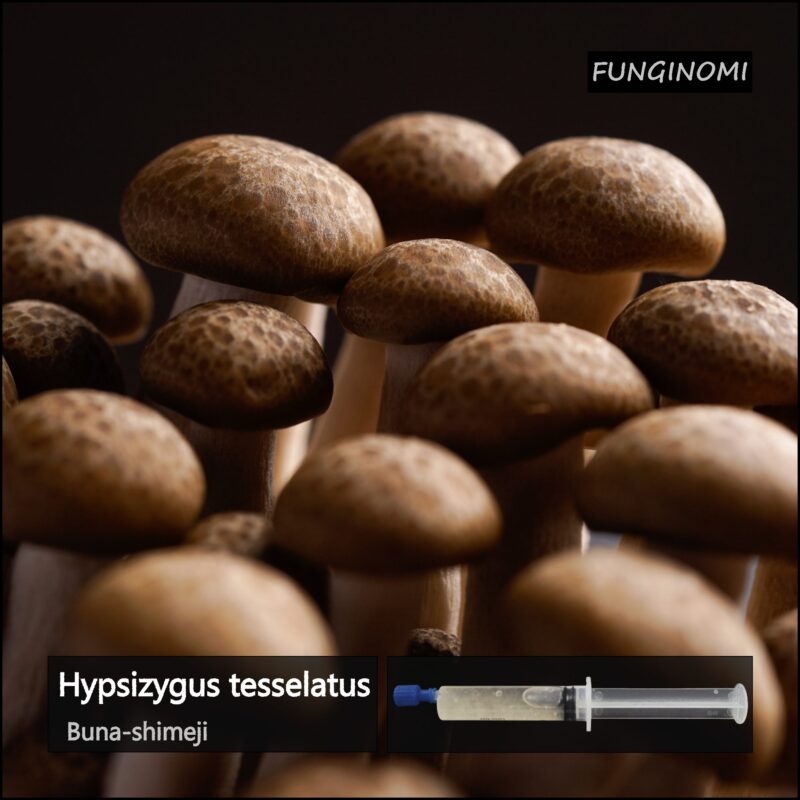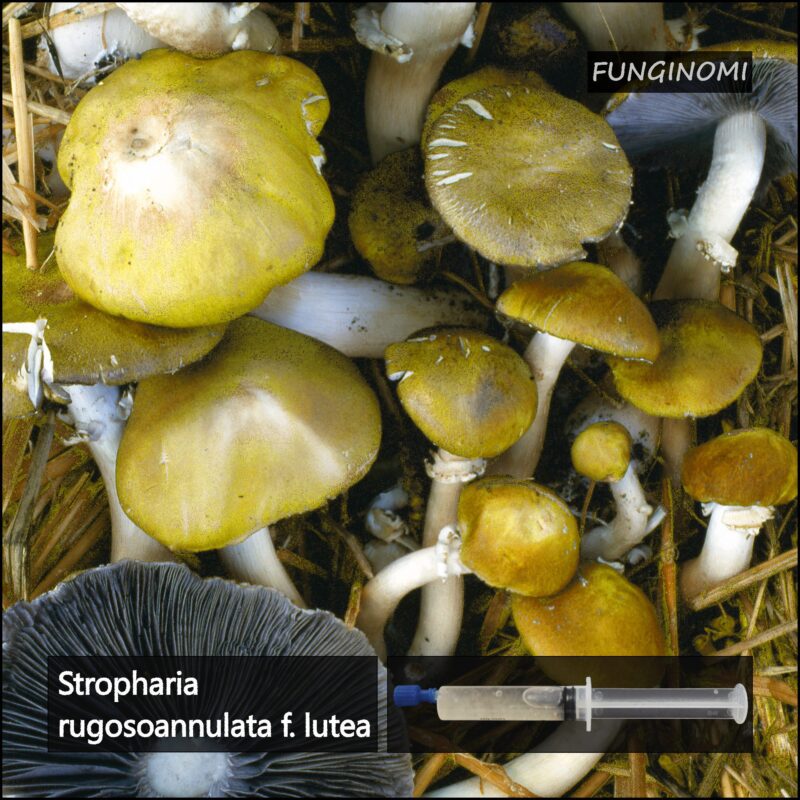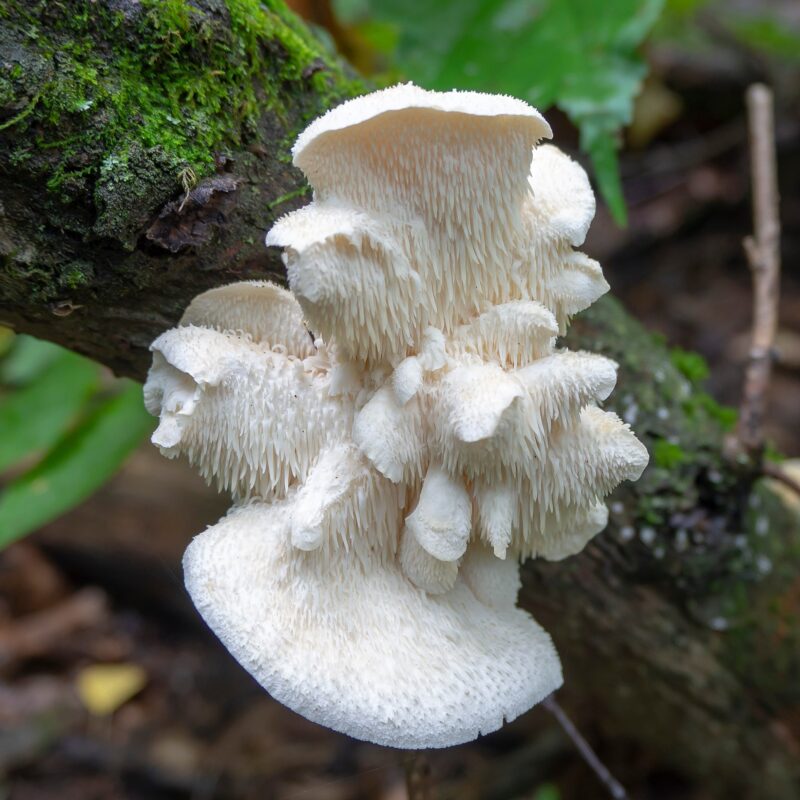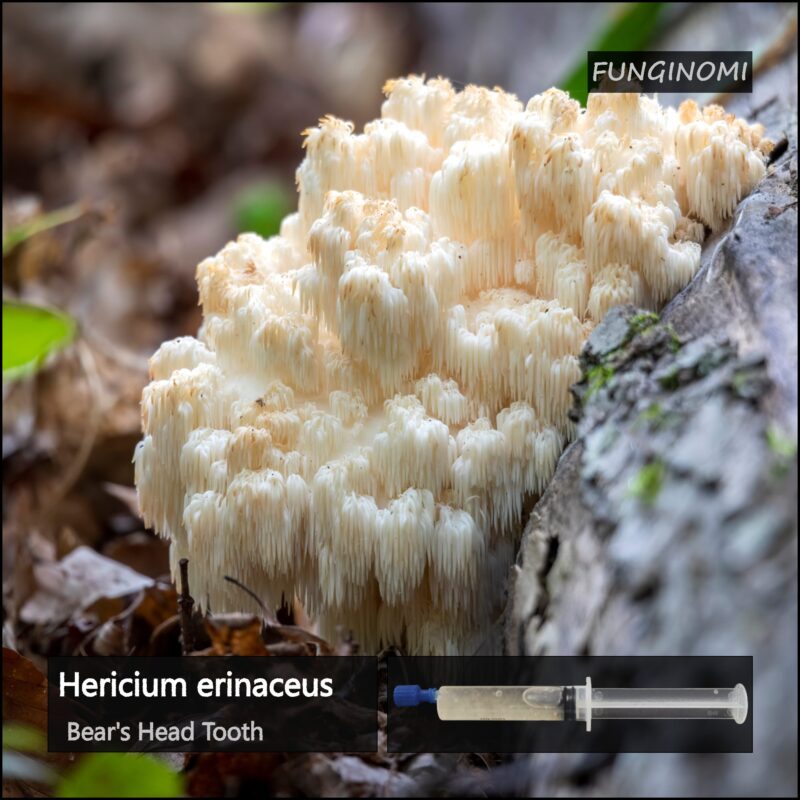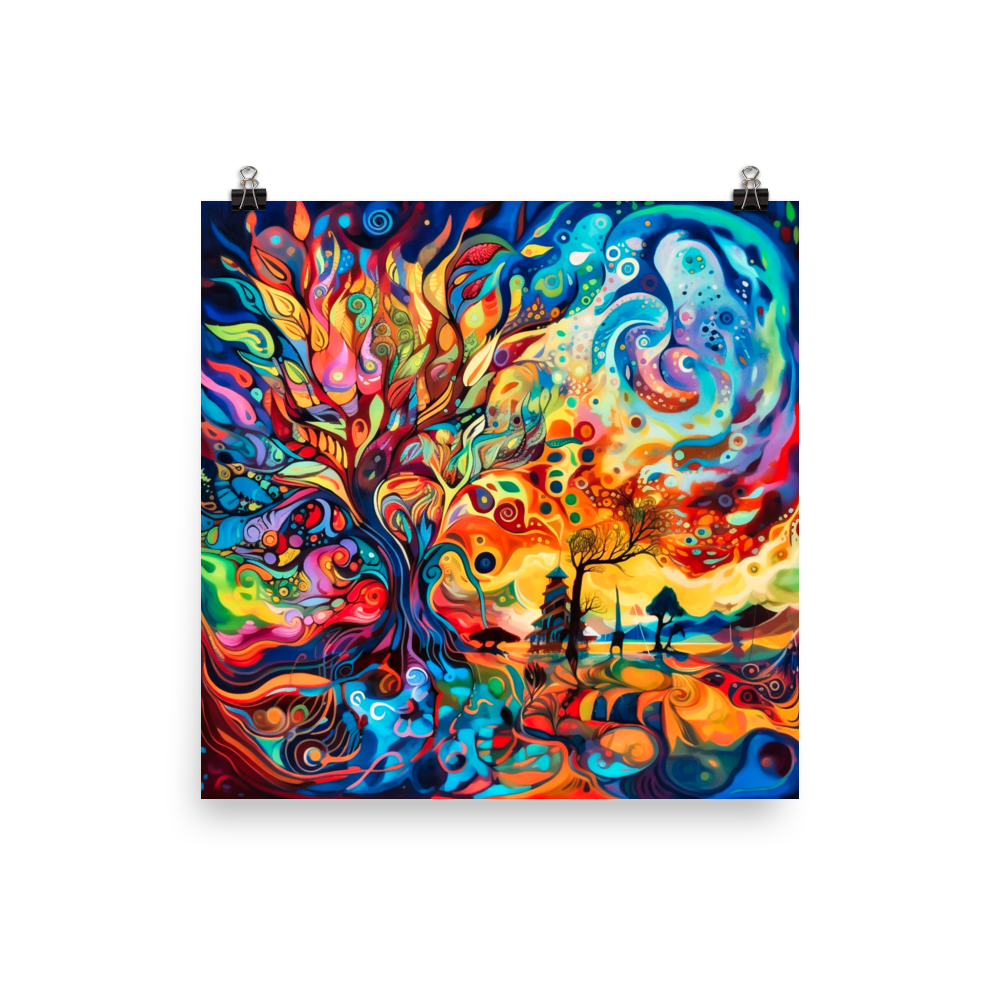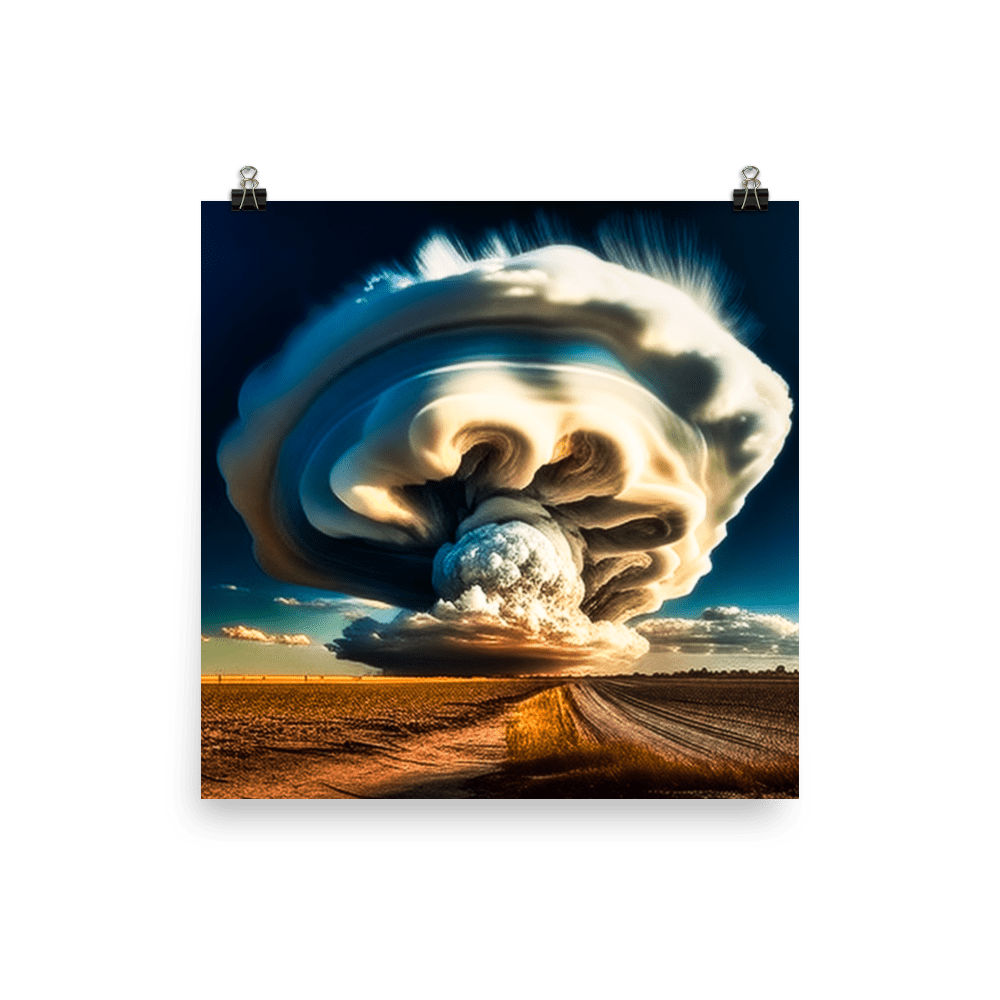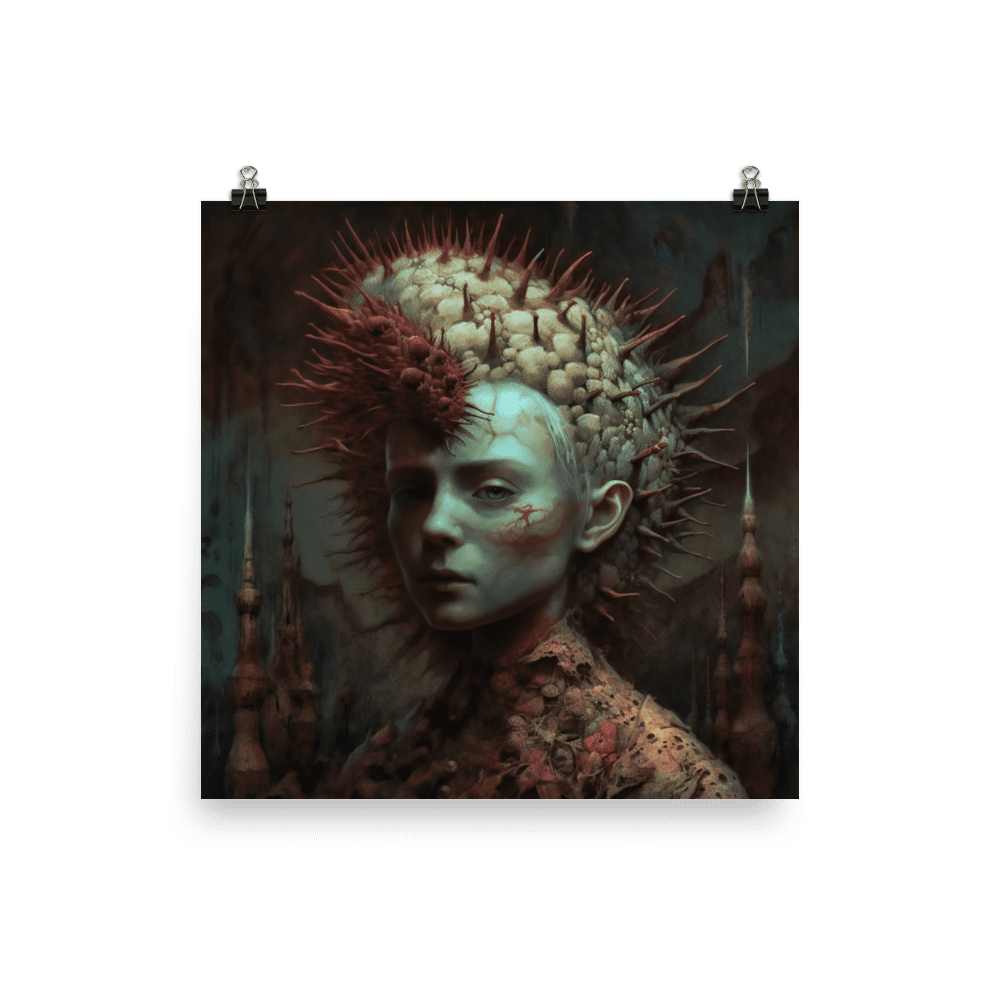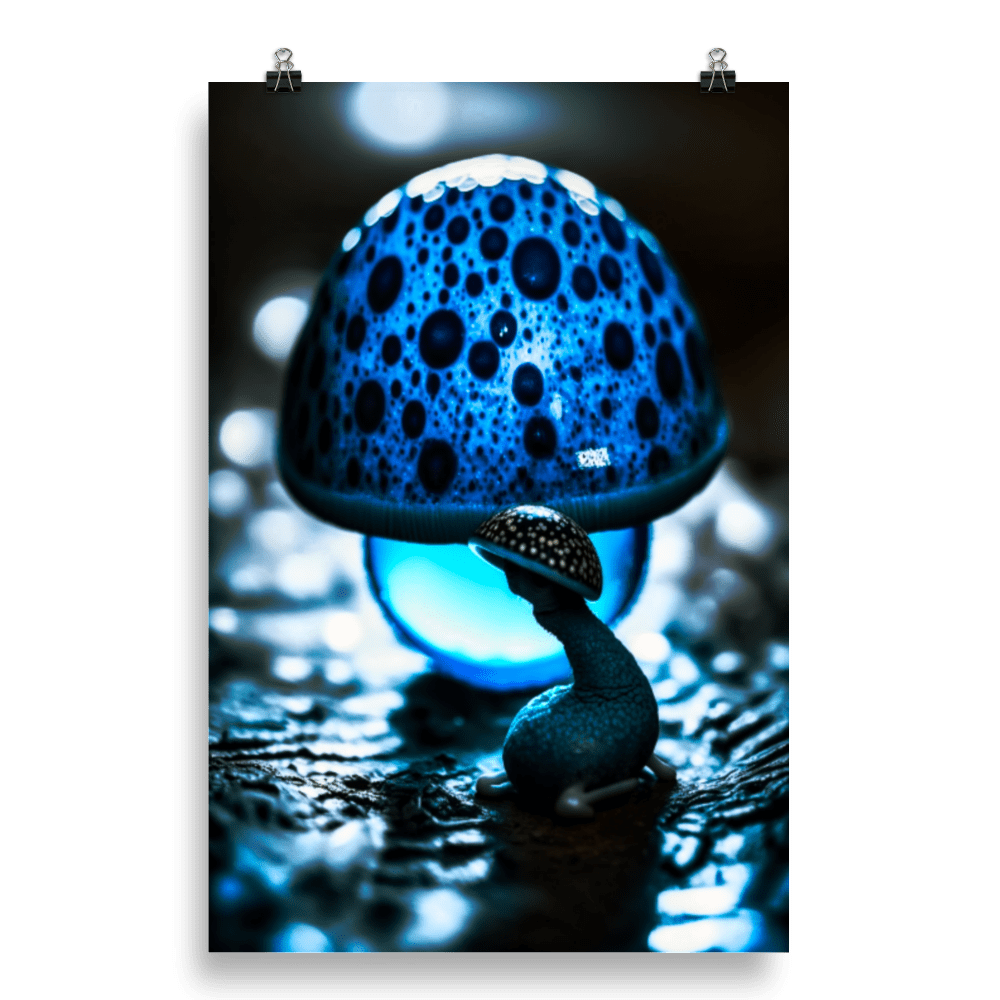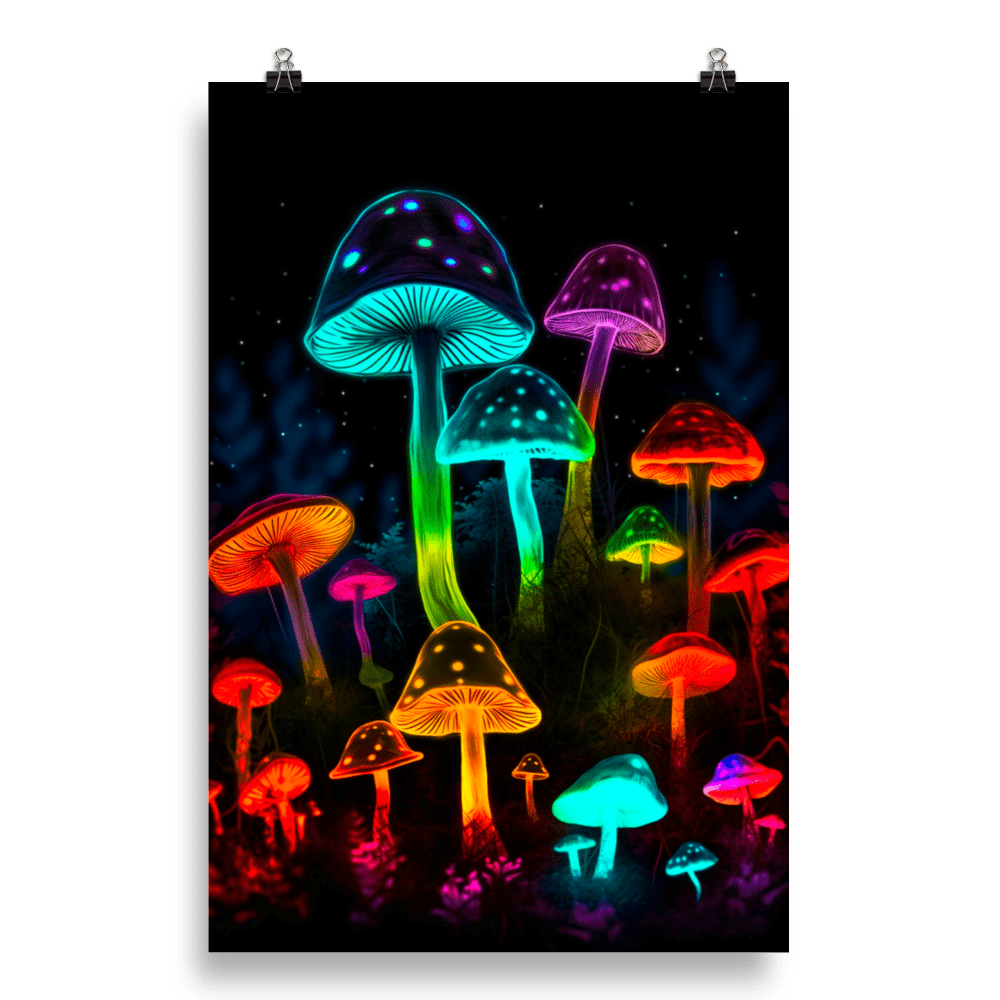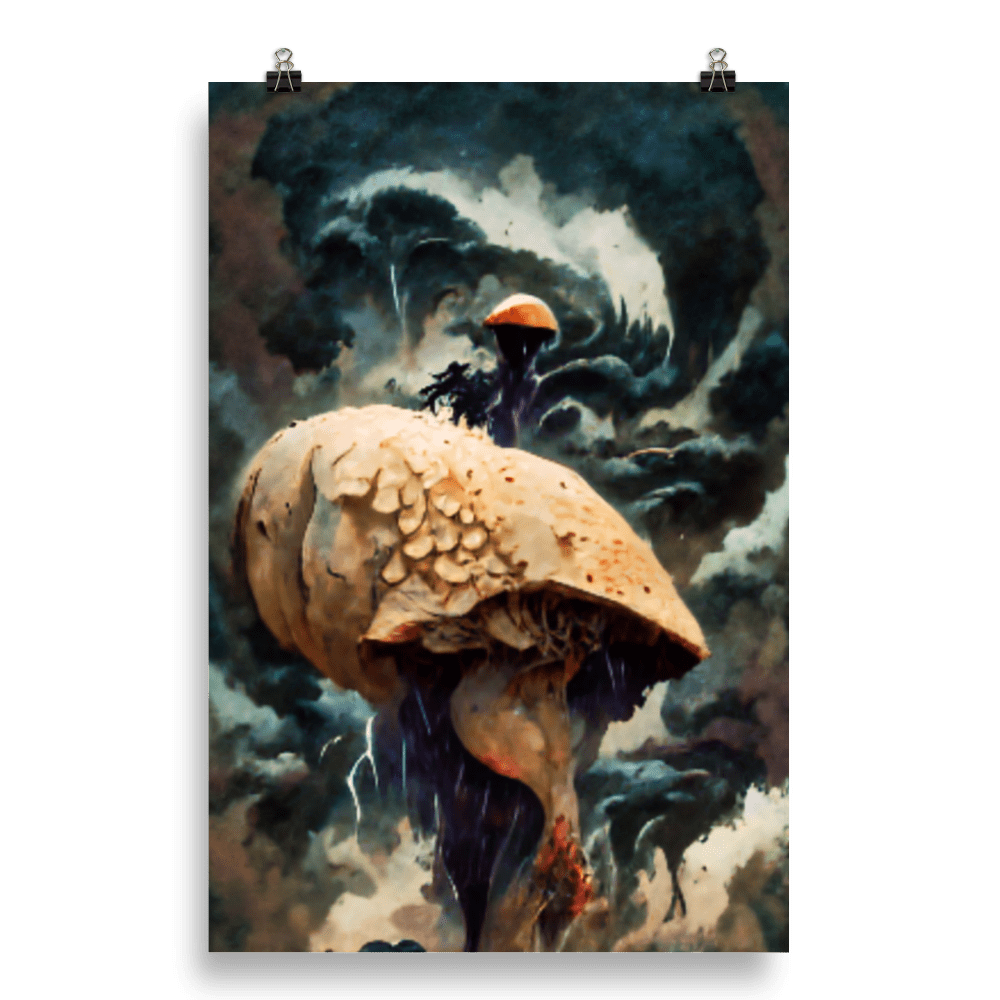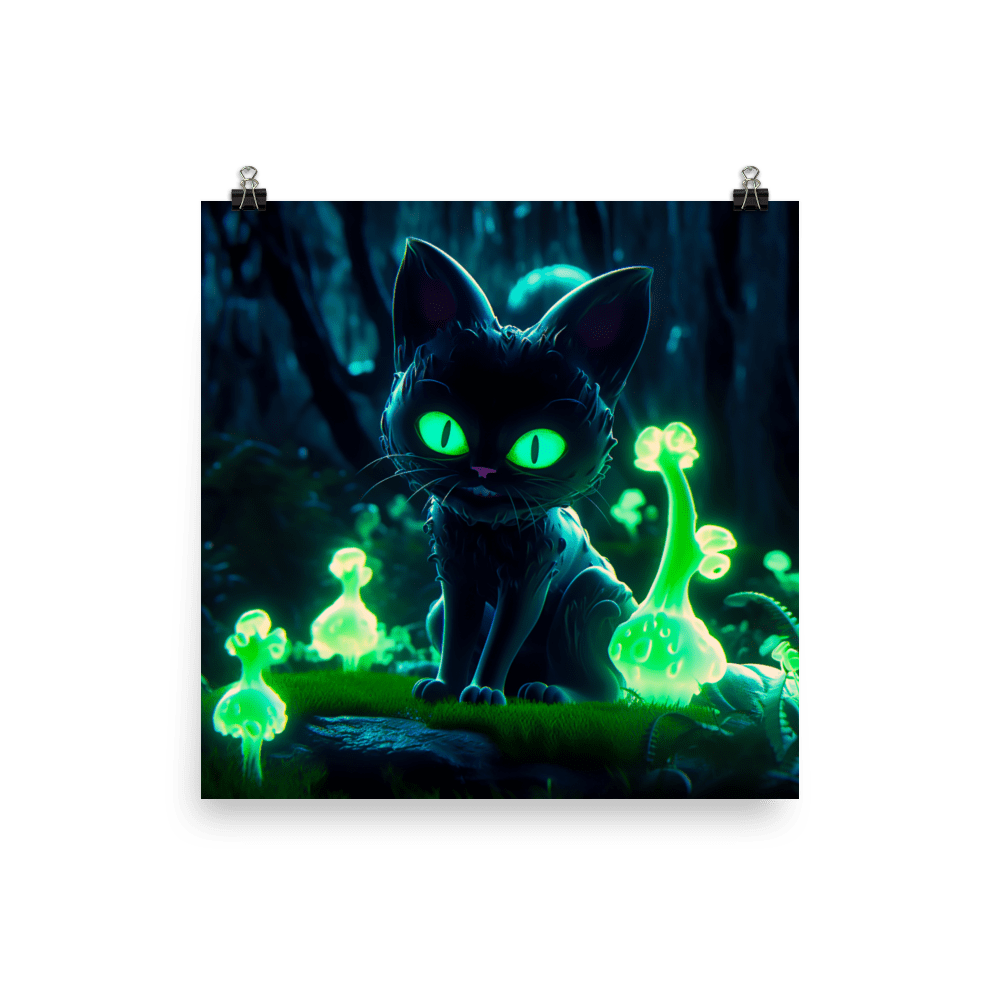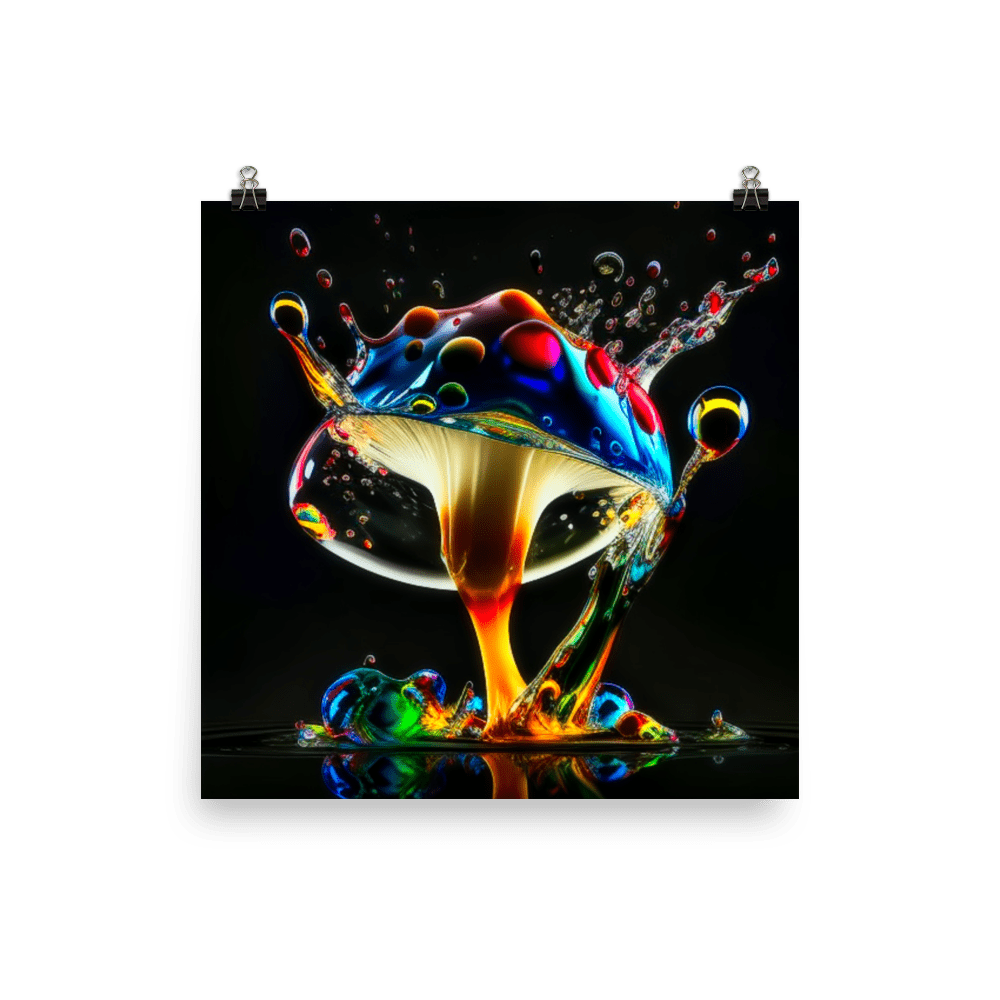A Comprehensive Guide to Safe Mushroom Identification: Tips and Precautions
Introduction to Mushroom Identification

Importance of mushroom identification
Importance of mushroom identification
Mushroom identification is crucial for anyone interested in foraging or consuming wild mushrooms. The ability to accurately identify mushrooms ensures your safety and prevents potential harm from poisonous species. Here are some key reasons why mushroom identification is essential:
- Safety: Differentiating between edible and toxic mushrooms is vital for your well-being. Accidental ingestion of poisonous mushrooms can lead to serious health complications and, in some cases, can be fatal.
- Edible Selection: Identifying edible mushrooms allows you to enjoy the delicious flavors and nutritional benefits they offer. It opens up a world of culinary possibilities and promotes a deeper connection with nature.
- Avoiding Misidentification: Many toxic mushrooms closely resemble edible varieties, making accurate identification crucial. A small mistake can have severe consequences, so it’s essential to be knowledgeable and skilled in mushroom identification.
- Environmental Impact: Proper mushroom identification helps preserve the delicate ecosystems where these fungi grow. By accurately identifying and only harvesting the appropriate species, you can contribute to the sustainability of mushroom populations.
- Mycological Study: Mushroom identification is an opportunity for scientific exploration and learning. By studying different species, you can deepen your understanding of fungal biology, ecology, and their role in the natural world.
Remember, while mushroom identification is an exciting and rewarding endeavor, it requires knowledge, experience, and caution. Always consult reliable resources, such as field guides and expert mycologists, before making any decisions regarding mushroom consumption.
Fascination and diversity of mushrooms
Fascination and diversity of mushrooms
Mushrooms have long captivated humans with their fascinating forms, colors, and ecological roles. Exploring the diversity of mushrooms can be a truly enriching experience. Here are some key aspects that highlight the fascination and diversity of mushrooms:
- Variety of Shapes and Colors: Mushrooms come in an astonishing array of shapes, sizes, and colors. From the classic umbrella-shaped cap to intricate coral-like formations, each species showcases its unique beauty.
- Ecological Roles: Mushrooms play essential roles in ecosystems. They act as decomposers, breaking down organic matter and recycling nutrients back into the environment. Some mushrooms form symbiotic relationships with trees, providing them with nutrients while receiving carbohydrates in return.
- Medicinal Properties: Certain mushrooms possess medicinal properties that have been recognized and utilized for centuries. Species like Reishi, Lion’s Mane, and Turkey Tail have gained popularity for their potential immune-boosting, anti-inflammatory, and cognitive benefits.
- Culinary Delights: Edible mushrooms have long been cherished for their distinct flavors and culinary versatility. Whether it’s the rich earthiness of Porcini, the delicate taste of Morels, or the umami notes of Shiitake, there is a mushroom to suit every palate.
- Mythology and Symbolism: Mushrooms have featured prominently in mythology, folklore, and art throughout history. They have been associated with mystical and magical qualities, representing growth, transformation, and the hidden mysteries of nature.
- Habitat Diversity: Mushrooms can be found in various habitats worldwide, from lush forests to grasslands, and even in urban environments. Each habitat harbors its own distinct fungal communities, adding to the overall diversity of mushrooms.
Exploring the world of mushrooms can be an exciting and educational journey. Remember to approach mushroom identification and foraging with caution, relying on reliable resources and expert guidance. Embrace the fascination and embrace the wonders of these incredible organisms.
Safety precautions and ethical considerations
Safety precautions and ethical considerations
When engaging in mushroom identification and foraging, it is essential to prioritize safety precautions and ethical considerations. Here are some key guidelines to ensure a safe and responsible approach:
- Education and Knowledge: Acquire in-depth knowledge of mushrooms through reliable sources such as field guides, workshops, and expert mycologists. Familiarize yourself with toxic mushrooms in your area to avoid accidental ingestion.
- Field Identification Skills: Develop strong field identification skills to differentiate between edible and poisonous species. Focus on key characteristics such as cap shape, gill structure, spore color, and odor.
- Caution and Doubt: If you are uncertain about the identification of a mushroom, err on the side of caution and avoid consumption. Some poisonous mushrooms closely resemble edible varieties, and misidentification can have severe consequences.
- Sustainable Harvesting: Follow ethical guidelines when harvesting mushrooms. Only collect mature specimens and leave young or small mushrooms to ensure the sustainability of fungal populations. Avoid damaging the mycelium, the unseen network of fungal threads beneath the ground.
- Respect for Ecosystems: Mushrooms play a vital role in ecosystems, so it’s crucial to show respect and minimal impact when foraging. Be mindful of your surroundings, avoid trampling vegetation, and leave the environment as you found it.
- Conservation Efforts: Consider participating in citizen science projects or local conservation initiatives to contribute to the understanding and preservation of mushrooms and their habitats. Your observations can help scientists and researchers better comprehend fungal biodiversity.
- Responsible Sharing: If you choose to share your foraged mushrooms, ensure you provide accurate identification and emphasize the importance of proper identification and safe consumption to others.
- Legal Considerations: Familiarize yourself with the regulations regarding mushroom foraging in your area. Some regions have specific rules and permits governing the collection of wild mushrooms.
By adhering to these safety precautions and ethical considerations, you can enjoy the rewards of mushroom identification and foraging while minimizing risks and promoting the sustainable appreciation of these remarkable organisms.
Mushroom Basics
What are mushrooms?
Mushrooms are fascinating organisms belonging to the fungi kingdom. They are non-photosynthetic, meaning they do not rely on sunlight for energy like plants do. Instead, they obtain their nutrients by breaking down organic matter or forming symbiotic relationships with other organisms.
Here are some key characteristics and features of mushrooms:
- Fungal Structure: Mushrooms are the fruiting bodies of fungi. They are formed by an intricate network of filamentous threads called mycelium. The mycelium absorbs nutrients from the surrounding environment and produces the visible mushroom structures.
- Cap and Stem: The typical mushroom consists of a cap and a stem. The cap, also known as the pileus, is the upper, often umbrella-shaped part of the mushroom. The stem, or stipe, provides support and connects the cap to the underlying mycelium.
- Gills and Spores: The underside of the mushroom cap often features gills, thin and parallel structures that produce and hold spores. Spores are tiny reproductive cells released by the mushroom to disperse and germinate into new mycelium.
- Habitat and Ecology: Mushrooms thrive in diverse habitats, including forests, grasslands, and decaying organic matter. They play vital ecological roles as decomposers, breaking down dead plant material and recycling nutrients back into the ecosystem.
- Edible and Medicinal Varieties: While some mushrooms are highly edible and sought after for culinary purposes, others possess medicinal properties. Medicinal mushrooms have been used in traditional medicine for their potential health benefits, such as immune support and anti-inflammatory properties.
- Mushroom Cultivation: Mushrooms can be cultivated commercially or in home settings using various techniques. Popular cultivated species include Button mushrooms, Shiitake, Oyster mushrooms, and Portobello mushrooms.
- Biodiversity: Mushrooms exhibit an incredible diversity of forms, colors, and sizes. With an estimated 5.1 million species globally, mushrooms contribute significantly to Earth’s biodiversity and remain a subject of ongoing scientific exploration.
Mushrooms are not only intriguing organisms but also hold immense value in terms of ecological roles, culinary delights, and potential medicinal applications. Exploring the world of mushrooms can unlock a deeper appreciation for the wonders of the natural world.
The anatomy of a mushroom
o understand the structure and components of a mushroom, let’s explore its anatomy. Mushrooms possess several distinct parts that contribute to their overall form and function. Here are the key components of a mushroom:
- Cap: The cap, or pileus, is the uppermost part of the mushroom. It is typically rounded or dome-shaped, although some species exhibit unique shapes. The cap serves to protect the gills and spore-producing structures beneath.
- Gills: Located on the underside of the cap, the gills are thin, blade-like structures that radiate from the stem to the outer edge of the cap. The gills are responsible for producing and holding the mushroom’s spores.
- Stem: The stem, or stipe, provides support and connects the cap to the mycelium underground. It is often cylindrical in shape and may vary in thickness and length depending on the mushroom species.
- Ring or Annulus: Some mushrooms feature a ring or annulus around the stem, also known as the veil. This remnant structure may have various shapes and positions and plays a role in spore dispersal and protection during the early stages of mushroom development.
- Volva: In some mushrooms, there is a cup-like structure at the base of the stem called the volva. The volva is a remnant of the protective membrane that initially enclosed the developing mushroom.
- Mycelium: The mycelium is the hidden network of fine, thread-like structures that extends throughout the substrate or soil. It serves as the vegetative part of the mushroom, absorbing nutrients and breaking down organic matter.
- Spores: Mushrooms reproduce via spores, which are tiny reproductive cells produced by the gills or other specialized structures. These spores are released into the environment and serve as the means of dispersal to establish new mycelium.
Understanding the anatomy of a mushroom is essential for accurate identification and appreciation of these unique organisms. Each part plays a crucial role in the mushroom’s life cycle and ecological interactions. By studying their anatomy, you can deepen your knowledge and develop a greater admiration for the remarkable world of mushrooms.
Understanding fungal life cycles
Fungi, including mushrooms, have complex and diverse life cycles that involve various stages and reproductive strategies. Let’s explore the key aspects of a typical fungal life cycle:
- Spore Germination: The life cycle begins with the germination of spores, which are the reproductive cells of fungi. Under favorable conditions, spores land on suitable substrates and initiate the growth of hyphae.
- Hyphae Development: Hyphae are thread-like structures that form the mycelium, the vegetative body of the fungus. Hyphae extend and branch, interconnecting to form a vast network throughout the substrate or surrounding environment.
- Mycelium Growth: As the mycelium expands, it absorbs nutrients from the environment and breaks down organic matter. The mycelium plays a vital role in nutrient cycling and decomposition processes.
- Reproductive Structures: When environmental conditions are favorable, the mycelium undergoes a transition to produce reproductive structures, such as mushrooms. This transition is often triggered by specific factors like temperature, humidity, or nutrient availability.
- Fruiting Body Formation: The fruiting body, or mushroom, emerges from the mycelium. It consists of a cap, stem, and other distinctive features depending on the mushroom species. The fruiting body’s primary function is to produce and release spores.
- Spore Dispersal: Within the fruiting body, specialized structures, such as gills, pores, or spore-bearing surfaces, produce vast quantities of spores. These spores are released into the environment through various mechanisms, including wind, rain, or animal interactions.
- Germination and New Hyphae Formation: When spores land on suitable substrates, they germinate, giving rise to new hyphae. This begins the cycle anew as the hyphae grow, develop a mycelium, and potentially produce new fruiting bodies.
It’s important to note that fungal life cycles can vary significantly among different species and groups of fungi. Some fungi exhibit additional reproductive strategies, such as asexual reproduction through budding or fragmentation. Understanding the fungal life cycle provides insights into their ecological roles, dispersal mechanisms, and overall diversity in nature.
Common types of mushrooms
The world of mushrooms encompasses a vast array of species, each with its unique characteristics and culinary or medicinal potential. Here are some common types of mushrooms that you may encounter:
- Button Mushrooms (Agaricus bisporus): Button mushrooms are widely cultivated and commonly found in grocery stores. They have a mild flavor and a firm texture when cooked, making them versatile for various culinary applications.
- Shiitake Mushrooms (Lentinula edodes): Originating from East Asia, shiitake mushrooms are renowned for their rich, savory flavor. They have a distinctive umbrella-shaped cap and are highly valued in Asian cuisine.
- Portobello Mushrooms (Agaricus bisporus): Portobello mushrooms are mature, fully grown button mushrooms. They have a meaty texture and a robust, earthy flavor. When cooked, they are often used as a flavorful meat substitute in vegetarian dishes.
- Oyster Mushrooms (Pleurotus spp.): Oyster mushrooms come in various colors and are known for their delicate, slightly sweet flavor. They have a soft texture and are popular in stir-fries, soups, and other culinary creations.
- Chanterelle Mushrooms (Cantharellus spp.): Chanterelles are highly prized for their distinct funnel or trumpet shape and fruity, apricot-like aroma. They have a delicate flavor that pairs well with both savory and sweet dishes.
- Morel Mushrooms (Morchella spp.): Morels are easily recognized by their distinctive honeycomb-like caps. They have an earthy, nutty flavor and are considered a gourmet delicacy.
- Porcini Mushrooms (Boletus edulis): Porcini mushrooms have a meaty texture and a rich, nutty flavor. They are highly sought after for their exceptional taste and are used in various culinary dishes, especially in Italian cuisine.
- Lion’s Mane Mushrooms (Hericium erinaceus): Lion’s Mane mushrooms are known for their unique appearance, resembling cascading white icicles or a lion’s mane. They have a delicate flavor and a texture reminiscent of seafood. They are also believed to have potential cognitive and neurological benefits.
These are just a few examples of the many fascinating and delicious mushrooms found around the world. When exploring mushrooms for culinary or medicinal purposes, always ensure proper identification and consult reliable sources to ensure your safety and enjoyment.
Mushroom Identification Process
Gathering essential tools and equipment
When embarking on the journey of mushroom identification, having the right tools and equipment can greatly aid in the process. Here are some essential items to gather before you begin:
- Field Guide: A reliable field guide specific to your region is invaluable for identifying mushrooms. Choose a guide that includes detailed descriptions, clear photographs, and information on key identification features.
- Magnifying Lens: A magnifying lens or hand lens can help you examine small details and microscopic features of mushrooms. This is particularly useful when studying spores, gill structures, or other intricate characteristics.
- Knife or Mushroom Brush: A small, sharp knife or a mushroom brush can be useful for gently cleaning the mushroom and removing dirt or debris without damaging the specimen. Avoid using your fingers to prevent contaminating or altering the mushroom’s appearance.
- Collecting Basket or Bag: Use a collecting basket or breathable bag to store and transport mushrooms while foraging. These containers allow air circulation, preventing mushrooms from becoming soggy or deteriorating quickly.
- Notebook and Pen: Keep a notebook and pen handy to jot down important observations, record locations, or make sketches. This information can be helpful for future reference or when consulting experts for identification assistance.
- Camera or Smartphone: Capture clear photographs of the mushrooms you encounter using a camera or smartphone. Photographs can serve as valuable visual references for identification or sharing with knowledgeable individuals.
- Safety Equipment: Depending on your location and the environment you’re exploring, consider wearing appropriate safety gear such as gloves, a hat, sturdy shoes or boots, and long pants. Some mushrooms may be toxic or cause skin irritations, so taking precautions is essential.
Remember, accurate mushroom identification requires careful examination and analysis of various characteristics. It’s crucial to prioritize safety and seek guidance from experienced mycologists or mushroom experts when uncertain. Enjoy the process of gathering tools and equipment, as they will enhance your mushroom identification adventures and help you delve deeper into the fascinating world of fungi.
Identifying key mushroom characteristics
When identifying mushrooms, it is essential to pay attention to specific characteristics that distinguish one species from another. Here are some key features to observe and consider during the identification process:
- Cap Shape and Color: Examine the cap of the mushroom, noting its shape (convex, flat, or bell-shaped) and color. Look for variations in color, including any patterns or changes as the mushroom ages.
- Gill Structure: Check the underside of the cap to observe the gills. Note their color, spacing, and attachment to the stem. Gills can be crowded, widely spaced, or absent in certain mushroom species.
- Stem Characteristics: Observe the stem of the mushroom, noting its length, thickness, and texture. Look for features such as a ring, bulbous base, or volva (cup-like structure at the base) if present.
- Spore Print Color: Obtaining a spore print can be a valuable step in identification. Place the cap of the mushroom, gill-side down, on a piece of paper or glass overnight to allow the spores to drop. Observe the color of the spore deposit, as it can vary from white to brown, black, or other shades.
- Odor: Take note of the odor emitted by the mushroom. Some mushrooms have distinctive aromas, ranging from fruity and pleasant to pungent or unpleasant. The odor can provide valuable clues for identification.
- Habitat and Substrate: Pay attention to the environment where the mushroom is growing. Note the type of substrate (e.g., wood, soil, decaying matter) and whether it prefers shady forests, grassy areas, or other specific habitats. This information can help narrow down the potential species.
- Bruising and Color Changes: Gently handle the mushroom and observe any bruising or color changes that occur when you touch or cut it. Some mushrooms undergo noticeable color transformations when damaged or exposed to air.
- Spore-bearing Surfaces: Apart from gills, mushrooms may have other types of spore-bearing surfaces. Look for pores, teeth, or ridges on the underside of the cap or on specific parts of the mushroom.
- Associated Trees or Plants: Note any associated trees or plants growing nearby. Certain mushrooms have symbiotic relationships with specific trees or form mycorrhizal associations, which can provide important clues for identification.
Remember, accurate identification of mushrooms can be challenging, and it is crucial to consult reliable sources, field guides, or experienced mycologists for assistance. Developing a keen eye for these key mushroom characteristics will greatly enhance your ability to identify different species and appreciate the incredible diversity found in the world of fungi.
Documenting important details for accurate identification
Accurate identification of mushrooms relies on thorough documentation of important details. When you come across a mushroom, be sure to record the following information to aid in the identification process:
- Location and Habitat: Note the specific location where you found the mushroom, including the habitat type (e.g., forest, meadow, or woodland). Document details about the surrounding environment, such as nearby trees, plants, or other notable features.
- Date and Time: Record the date and time of your mushroom sighting. This information can be helpful in determining seasonal patterns and identifying species associated with specific times of the year.
- Description: Provide a detailed description of the mushroom’s appearance, including its size, shape, color, and any unique features. Pay close attention to characteristics like the cap, stem, gills, spore print color, and presence of a ring or volva.
- Odor and Taste: Document the odor emitted by the mushroom, as well as any specific taste if it is safe to sample. Odor and taste can be significant identifiers for certain species.
- Photographs: Take clear, well-lit photographs of the mushroom from various angles, capturing important features such as the cap, gills, stem, and any distinguishing characteristics. Include close-ups and wider shots to provide a comprehensive visual record.
- Spore Print: If possible, obtain a spore print by placing the mushroom cap, gill-side down, on a piece of paper or glass overnight. Document the resulting spore color, as it can be a crucial identification characteristic.
- Associated Trees or Plants: Note any associated trees or plants growing in close proximity to the mushroom. Certain mushrooms have specific associations with particular host plants, which can aid in identification.
- Additional Observations: Include any additional observations or notable details, such as bruising or color changes when the mushroom is handled, presence of insects or other organisms, or any other relevant information that may assist in identification.
By meticulously documenting these important details, you provide a comprehensive record that aids in accurate mushroom identification. This information can be shared with experts, consulted in field guides, or used for further research to unravel the identity of the mushrooms you encounter. Remember to prioritize safety and consult reliable sources when dealing with unfamiliar or potentially toxic species.
Online and offline resources for mushroom identification
When it comes to mushroom identification, a combination of online and offline resources can be invaluable. Here are some key sources to consider:
Online Resources:
- Mycological Websites: Explore mycological websites that provide extensive information on mushroom identification, taxonomy, and characteristics. Examples include MushroomExpert.com, MycoKey, and Mushroom Observer.
- Mushroom Identification Apps: Utilize mushroom identification apps available for smartphones and tablets. These apps often offer image recognition technology, allowing you to take photos and receive potential matches and identification suggestions. Popular apps include iNaturalist, PictureThis, and Mushroom ID.
- Online Mushroom Communities: Join online mushroom communities and forums where experienced mycologists, mushroom enthusiasts, and experts share knowledge and offer identification assistance. Websites like Shroomery.org and Mushroom Observer have active communities where you can seek guidance.
- Social Media Groups: Participate in social media groups focused on mushrooms and mycology. Platforms like Facebook, Reddit, and Instagram have dedicated groups where members share photos, seek identification help, and exchange information.
- Educational Websites and Courses: Access educational websites and online courses that cover mushroom identification. Websites like Coursera and Udemy offer mycology courses taught by experts that provide in-depth knowledge on identification techniques.
Offline Resources:
- Field Guides: Invest in reliable field guides specific to your region or mushroom groups of interest. These books often contain detailed descriptions, photographs, and identification keys to help you identify mushrooms in the field. Examples include “Mushrooms Demystified” by David Arora and “National Audubon Society Field Guide to North American Mushrooms.”
- Mycology Books: Expand your knowledge with comprehensive mycology books that cover mushroom identification, taxonomy, and fungal biology. Books like “Mushrooms of the Pacific Northwest” by Steve Trudell and Joe Ammirati and “Mycelium Running” by Paul Stamets provide valuable insights.
- Local Mycological Societies: Connect with local mycological societies or clubs in your area. These organizations often offer workshops, forays, and educational events where you can learn from experienced mushroom enthusiasts and join guided mushroom identification outings.
- Botanical Gardens and Nature Centers: Visit botanical gardens or nature centers that have dedicated displays or educational programs on mushrooms. These institutions may provide resources, workshops, or guided walks to enhance your understanding of mushroom identification.
Combining online and offline resources allows you to access a wealth of information, engage with knowledgeable individuals, and develop your mushroom identification skills. Always cross-reference information from multiple sources and exercise caution when consuming wild mushrooms.
Identifying Mushrooms by Physical Characteristics
Cap shape, color, and texture
When it comes to identifying mushrooms based on their physical characteristics, paying attention to the cap is crucial. Here are some key elements to consider:
Cap Shape:
- Convex: The cap of the mushroom is rounded, with a slightly raised center. This is a common shape seen in many mushroom species.
- Flat: The cap is flat, with no significant curvature or uplifted center. It appears as a horizontal surface.
- Bell-shaped: The cap resembles a bell, with a wider, rounded top and a narrower base. This shape is characteristic of certain mushroom species.
- Conical: The cap is cone-shaped, tapering to a point at the top. It may resemble an upside-down ice cream cone.
Cap Color:
- White: The cap is predominantly white in color, ranging from pure white to creamy or off-white shades.
- Brown: The cap exhibits various shades of brown, including light tan, chestnut, or dark brown.
- Red: The cap displays red hues, ranging from vibrant red to reddish-brown or maroon.
- Yellow: The cap is yellow, ranging from pale yellow to bright yellow or even golden-yellow shades.
- Orange: The cap has orange tones, ranging from light orange to deep, vibrant orange.
- Green: The cap displays green coloration, which can range from light green to darker shades, often associated with mold or fungal growth.
Cap Texture:
- Smooth: The cap surface is smooth and lacks any visible texture or distinct patterns.
- Scaly: The cap is covered in scales or small flakes, giving it a textured appearance. The scales can be small and densely packed or larger and more spaced out.
- Fibrous: The cap has a fibrous or stringy texture, with thin, thread-like structures covering the surface.
- Viscid: The cap surface appears sticky or slimy, often due to a gelatinous layer that can be easily seen or felt.
By observing the shape, color, and texture of the cap, you can gather important clues for mushroom identification. Remember that these characteristics should be considered alongside other features like gill structure, stem characteristics, and spore color to obtain a more accurate identification. Utilize reliable field guides, online resources, and expert advice to enhance your understanding of the diverse world of mushrooms.
Gills, pores, or spines: Understanding the underside of mushrooms
To fully grasp the identification of mushrooms, it is essential to understand the underside of the cap, where you’ll find gills, pores, or spines. Here’s an overview of these important features:
Gills:
- Structure: Gills are thin, blade-like structures that radiate outwards from the stem toward the edge of the cap. They are typically found in gilled mushrooms.
- Attachment: Observe how the gills are attached to the stem. They may be free, meaning they do not touch the stem, or adnate, where they are fused to the stem. Other attachment types include decurrent, where the gills run slightly down the stem, and sinuate, where they have a wavy or notched attachment.
- Color: Take note of the color of the gills. They can range from white to various shades of cream, yellow, pink, brown, or even black.
- Spacing: Pay attention to the spacing between the gills. They can be close, moderately spaced, or distant from each other.
Pores:
- Structure: Pores are small openings or tube-like structures found on the underside of the cap. They are characteristic of pore fungi, such as boletes.
- Arrangement: Examine how the pores are arranged. They can be circular, angular, or have other distinctive shapes. Additionally, note if they form a reticulate pattern (net-like) or if they have a smooth surface.
- Color: Determine the color of the pores. They can range from white, cream, yellow, orange, green, blue, or even pinkish hues.
- Stem: Note if the stem has pore-like features or if it is smooth and lacks pores. Some mushrooms have a combination of pores on the cap and a smooth stem.
Spines:
- Structure: Spines are bristle-like or tooth-like projections found on the underside of the cap. They are characteristic of certain groups of fungi, such as tooth fungi (Hydnaceae).
- Arrangement: Observe how the spines are arranged. They can be parallel, cross-veined, or have other unique patterns.
- Color: Pay attention to the color of the spines. They can range from white, cream, yellow, brown, black, or other pigments.
Understanding the differences between gills, pores, and spines is crucial for accurate mushroom identification. These features, along with other characteristics like cap shape, color, and odor, play a significant role in narrowing down potential species. Consult reliable field guides, mycological resources, and experienced identifiers to enhance your knowledge and confidently explore the captivating world of mushrooms.
Stem features and characteristics
When identifying mushrooms, paying attention to the stem or stalk is essential. Here are some key features and characteristics to consider:
- Height and Length: Note the height and length of the stem. It can range from short and stubby to tall and slender, providing valuable information for identification.
- Shape: Observe the shape of the stem. It can be cylindrical, club-shaped, bulbous, tapering, or have other distinct forms.
- Color: Take note of the stem coloration. It can vary greatly, ranging from white, cream, yellow, brown, reddish-brown, gray, to even black.
- Surface Texture: Assess the surface texture of the stem. It can be smooth, fibrous, scaly, ridged, or have other unique textures.
- Ring or Annulus: Check for the presence of a ring or annulus around the stem. This is a circular or partial veil-like structure left by the partial veil that once covered the gills or pore surface.
- Volva: Look for a volva, which is a cup-like structure or sack at the base of the stem. The presence, absence, size, and shape of the volva can be important identification features.
- Stem Base: Examine the base of the stem. Note if it is bulbous, rooting, tapering, or has any distinctive features.
- Stem Flesh: Cut the stem open and observe the flesh. Note its color, texture, and any changes such as bruising or discoloration.
- Hollow or Solid: Determine if the stem is hollow or solid. Some mushrooms have a hollow stem, while others have a solid or partially hollow structure.
- Ring Zone: Observe if the stem has a ring zone where the partial veil was once attached. This can manifest as a color change, texture difference, or distinct ring-like band.
Remember to consider the stem features in conjunction with other mushroom characteristics such as cap shape, gill structure, spore color, and habitat. Utilize reliable field guides, mycological resources, and seek guidance from experienced identifiers to enhance your understanding and ensure accurate mushroom identification.
Identifying unique features like veil, ring, and volva
When identifying mushrooms, certain unique features like the veil, ring, and volva can provide valuable clues for accurate identification. Pay attention to these distinguishing characteristics:
Veil:
- Cortina: Some mushrooms have a delicate cobweb-like veil called a cortina that initially covers the gills. It may be ephemeral and disappear as the mushroom matures.
- Cobwebby Veil: Look for remnants of a cobwebby veil that may appear as strands or patches on the cap or stem. This veil is common in certain mushroom species.
- Universal Veil: Certain mushrooms possess a universal veil, which is a membrane that encloses the entire mushroom when young. It often leaves behind distinctive patches, warts, or scales on the cap or stem as the veil breaks apart.
Ring:
- Annulus: Check for the presence of an annulus, also known as a ring, around the stem. It can be a circular, flared, pendant, or fragmented structure that remains from the partial veil.
- Position: Note the position of the ring on the stem. It can be located high, low, or at a specific distance from the cap. Some species may have a movable ring that can slide up and down the stem.
- Texture: Observe the texture of the ring. It can be smooth, grooved, scaly, or have other distinctive patterns.
Volva:
- Presence: Look for the presence of a volva, which is a cup-like structure or sack at the base of the stem. The volva can vary in size, shape, and color, and may be partially or fully underground.
- Cup or Sac: Note if the volva resembles a cup, sack, or bag. It may be membranous, fibrous, or have remnants attached to the base of the stem.
- Texture: Assess the texture of the volva. It can be smooth, patchy, warts, or have other distinct surface features.
- Color: Pay attention to the color of the volva. It can range from white, yellow, brown, gray, to other shades depending on the mushroom species.
By observing these unique features, including the presence and characteristics of the veil, ring, and volva, you can gather important information for mushroom identification. Remember to consider these features alongside other key characteristics like cap shape, gill structure, stem features, and spore color to achieve a more accurate identification. Utilize reliable field guides, mycological resources, and seek guidance from experienced identifiers to enhance your knowledge and confidence in identifying mushrooms.
Understanding Mushroom Habitats and Ecology
Mushroom habitats: forests, fields, and beyond
Mushrooms exhibit a remarkable diversity of habitats, each with its own unique set of conditions. Understanding the different mushroom habitats can greatly assist in their identification. Here are some key habitats where mushrooms thrive:
Forests:
- Deciduous Forests: Many mushrooms can be found in deciduous forests, characterized by a variety of broad-leaved trees such as oak, maple, beech, and birch. These habitats provide a rich substrate for mushrooms to grow.
- Coniferous Forests: Coniferous forests, dominated by trees like pine, spruce, and fir, host their own array of mushrooms. These habitats have acidic soil and provide a different range of fungi species compared to deciduous forests.
- Mixed Forests: Mixed forests combine both deciduous and coniferous trees, creating diverse ecological niches and supporting a wide range of mushroom species.
Fields and Meadows:
- Grasslands: Open grassy areas like meadows and pastures are home to various mushrooms that have symbiotic relationships with grasses or herbaceous plants.
- Crop Fields: Agricultural crop fields can also harbor mushrooms, especially when there is organic matter in the soil or when specific farming practices create favorable conditions.
Wetlands and Riparian Areas:
- Swamps and Marshes: Swamps and marshes provide moist environments where moisture-loving mushrooms thrive. These habitats often have a high water table or are periodically flooded.
- Riversides and Stream Banks: The riparian areas along rivers and streams can support a rich diversity of mushrooms, particularly those that benefit from the moisture and organic matter present in these environments.
Urban and Suburban Areas:
- Parks and Gardens: Urban and suburban environments, including parks and gardens, can harbor mushrooms. These areas may have introduced species or unique microhabitats suitable for certain mushroom species.
- Mulched Areas: Mushrooms can often be found in mulched areas such as flowerbeds, wood chip piles, or along paths where organic materials provide an ideal substrate for fungal growth.
It’s important to note that the mushroom habitats mentioned above are general categories, and specific species may have narrower ecological preferences. Additionally, some mushrooms may be exclusive to specific habitats, while others can be more adaptable and occur in multiple environments.
When exploring mushrooms, consider the habitat, surrounding vegetation, soil type, and other ecological factors. This broader understanding of mushroom habitats and ecology will enhance your ability to locate and identify different species. Always exercise caution, respect the environment, and ensure responsible foraging practices when interacting with mushrooms and their habitats.
Associations with trees and plants
Mushrooms have fascinating associations with various trees and plants, forming intricate symbiotic relationships that play a vital role in their ecological dynamics. Understanding these associations can provide valuable insights into mushroom identification and their ecological roles. Here are some important associations to consider:
Mycorrhizal Associations:
- Mycorrhizal Fungi: The majority of mushrooms form mycorrhizal associations with trees and plants. In these relationships, the fungal mycelium intertwines with the roots of the host plant, creating a mutually beneficial partnership.
- Nutrient Exchange: Mycorrhizal fungi assist in nutrient exchange between the tree/plant and the soil. The fungus helps the host plant acquire nutrients, especially phosphorus and micronutrients, while receiving sugars and other organic compounds in return.
- Tree-Specific Associations: Certain mushrooms exhibit a specific affinity for particular tree species. For example, Amanita muscaria is often associated with birch and pine trees, while Cantharellus cibarius (chanterelle) is frequently found near oak and beech trees.
Saprotrophic Associations:
- Saprophytic Fungi: Some mushrooms are saprophytic fungi that derive their nutrients by decomposing dead organic matter, such as fallen trees, leaf litter, or decaying plant material.
- Decomposition and Recycling: Saprophytic mushrooms play a crucial role in decomposition and recycling of organic matter, aiding in nutrient cycling and ecosystem functioning.
Parasitic Associations:
- Parasitic Fungi: Parasitic mushrooms obtain nutrients by infecting and living off living host organisms, typically trees. They can cause diseases or infections that affect the health and vitality of the host.
- Tree Damage: Parasitic mushrooms, like the Heterobasidion annosum (root rot fungus), can cause significant damage to trees, leading to wood decay and potential tree mortality.
It’s important to note that not all mushrooms have specific associations with trees or plants. Some mushrooms, known as generalists, can grow in various habitats and have a broader ecological range. Understanding the associations between mushrooms and their preferred host trees or plants can be a valuable tool in identifying certain species and predicting their occurrence.
When identifying mushrooms, take note of the trees or plants growing in the vicinity. Consider the potential mycorrhizal associations or other ecological connections that may exist. This holistic approach will enhance your ability to recognize the intricate relationships between mushrooms and the surrounding flora, providing a deeper understanding of their ecological significance.
Mushroom Seasons and Optimal Collection Times: Timing is Key
Timing plays a crucial role in mushroom foraging as different mushroom species have specific seasons and optimal collection times. Understanding these seasonal patterns and knowing when to search for mushrooms can greatly enhance your chances of successful identification. Here are some key points to consider:
- Seasonal Variations: Mushrooms are highly influenced by seasonal changes, including temperature, moisture, and daylight hours. Different mushroom species have preferred seasons for fruiting.
- Spring: Spring is an exciting time for mushroom enthusiasts, with the emergence of species like morels (Morchella spp.), oyster mushrooms (Pleurotus spp.), and various springtime boletes. As the weather warms up and soil temperatures rise, these mushrooms appear.
- Summer: While summer is generally drier, certain mushrooms still make their appearance. Look out for species like chanterelles (Cantharellus spp.), chicken of the woods (Laetiporus sulphureus), and various boletes that thrive in warmer conditions.
- Fall: Fall is often considered the peak season for mushrooms. Many iconic species, such as porcini (Boletus edulis), honey mushrooms (Armillaria spp.), and the brightly colored fly agaric (Amanita muscaria), can be found during this time. Moisture, cooler temperatures, and fallen leaves contribute to their fruiting.
- Winter: While mushrooms are less abundant in winter, certain cold-loving species like the enigmatic snow mushroom (Tremella fuciformis) can be found. Additionally, some species like the velvet shank (Flammulina velutipes) and oyster mushrooms can still be found in milder climates.
- Local Climate: Mushroom seasons can vary depending on your geographical location and local climate. Factors such as elevation, latitude, and regional weather patterns can influence the timing of fruiting.
- Microclimates: Mushrooms can also be influenced by microclimates within a given area. For example, shaded areas, moist valleys, or near bodies of water may have different fruiting times compared to open, drier locations.
Remember, the optimal collection time for mushrooms is typically when they are young and in their prime. As mushrooms mature, they can undergo changes in appearance, texture, and flavor. It’s important to collect mushrooms at the right stage to ensure the best culinary experience and accurate identification.
To stay informed about mushroom seasons, consult local field guides, join local mycological societies or foraging groups, and utilize online resources specific to your region. Always follow ethical foraging practices, respect the environment, and seek guidance from experienced foragers or mycologists when in doubt.
By understanding the seasonal patterns and optimal collection times for different mushroom species, you can enhance your mushroom hunting adventures and increase your chances of finding a variety of edible and interesting fungi.
Environmental factors affecting mushroom growth
Mushroom growth is intricately tied to various environmental factors that contribute to their development and fruiting. Understanding these factors can provide valuable insights into where and when mushrooms are likely to appear. Here are some key environmental factors that influence mushroom growth:
- Moisture: Adequate moisture is essential for mushroom growth. Mushrooms often thrive in environments with consistent humidity levels, whether it’s from rainfall, groundwater, or dew. Moisture helps in the absorption of nutrients and supports the growth of mycelium.
- Temperature: Different mushroom species have specific temperature preferences. Some mushrooms prefer cooler temperatures and are commonly found in spring or fall, while others thrive in warmer conditions during the summer. Temperature fluctuations can also trigger fruiting in certain species.
- Light: Light plays a significant role in mushroom growth, although its importance varies among species. While some mushrooms prefer low light or shade, others require exposure to light for proper development. Light can influence the direction of mushroom growth, cap coloration, and even spore production.
- Air Quality: Good air circulation is crucial for mushrooms to thrive. Adequate oxygen levels and proper exchange of gases are necessary for the growth and metabolism of the fungal mycelium. Stagnant or polluted air can negatively impact mushroom growth.
- Soil or Substrate: Different mushrooms have specific preferences for their soil or substrate. Some species prefer rich, organic soils, while others thrive in wood, leaf litter, or decomposing matter. The composition and nutrient content of the substrate directly affect mushroom growth and fruiting.
- pH Level: Mushroom species exhibit varying preferences for soil pH. Some mushrooms prefer slightly acidic conditions, while others thrive in more alkaline or neutral soils. pH levels influence the availability of nutrients and can impact the mycelial growth and fruiting success of mushrooms.
- Microorganisms: Interactions with other microorganisms in the environment can influence mushroom growth. Beneficial microorganisms in the soil, such as bacteria and mycorrhizal fungi, can enhance the nutrient availability and overall health of mushrooms.
- Elevation and Geographic Factors: Elevation, along with other geographic factors like latitude, longitude, and local climate, can significantly affect mushroom growth. Certain species are more prevalent at higher elevations or in specific geographic regions due to the unique environmental conditions found there.
It’s important to note that these environmental factors often interact with one another, creating complex relationships that influence mushroom growth patterns. Additionally, different mushroom species have their own specific requirements, making it essential to understand their ecological niches for successful identification and cultivation.
By considering the influence of moisture, temperature, light, air quality, soil or substrate composition, pH levels, microorganisms, and geographic factors, you can better predict when and where mushrooms are likely to grow. However, it’s important to remember that mushroom growth can still be unpredictable and influenced by local variations. Observing and adapting to the specific conditions of your environment will enhance your understanding and appreciation of the fascinating world of mushrooms.
Common Groups of Mushrooms
Edible mushrooms: Identification and culinary uses
Exploring edible mushrooms opens up a world of culinary possibilities, but it’s crucial to correctly identify them to ensure safe consumption. Here are some common groups of edible mushrooms, along with their key characteristics and culinary uses:
- Agaricus:
- Key Features: Agaricus mushrooms have a classic mushroom appearance with a cap, gills, and a stem. They often have a mild to nutty flavor.
- Culinary Uses: Agaricus mushrooms include popular edible species like the button mushroom and the cremini or portobello mushroom. They are versatile and can be used in various dishes, including sautés, soups, stir-fries, and as toppings for pizzas and salads.
- Boletus:
- Key Features: Boletus mushrooms have a distinct cap and a sponge-like surface instead of gills. They typically have a fleshy texture and range in color from brown to yellow.
- Culinary Uses: Boletus mushrooms, such as the porcini or cep, are highly prized for their rich and earthy flavor. They are often used in risottos, pasta dishes, soups, and sauces. They can also be dried for later use.
- Cantharellus:
- Key Features: Cantharellus mushrooms, commonly known as chanterelles, have a distinctive trumpet-like shape with wavy caps and a ridges or vein-like structure on the underside.
- Culinary Uses: Chanterelles have a delicate, fruity flavor and are prized for their culinary versatility. They can be sautéed, added to omelets, used in cream-based sauces, or incorporated into risottos and pastas.
- Pleurotus:
- Key Features: Pleurotus mushrooms, also known as oyster mushrooms, have broad, fan-shaped caps with gills that run down the stem. They come in various colors, including white, yellow, and pink.
- Culinary Uses: Oyster mushrooms have a mild, delicate flavor and a tender texture. They can be stir-fried, grilled, added to soups, stews, and stir-fries, or used as a substitute for meat in vegetarian dishes.
- Lentinula:
- Key Features: Lentinula mushrooms, commonly known as shiitake mushrooms, have a brown, umbrella-shaped cap with distinctive gills on the underside. They often have a rich, smoky flavor.
- Culinary Uses: Shiitake mushrooms are highly versatile and are used in various Asian cuisines. They can be stir-fried, sautéed, used in soups and stews, added to noodle dishes, or even dried for longer shelf life.
- Hericium:
- Key Features: Hericium mushrooms, also called lion’s mane mushrooms, have a unique appearance with long, cascading spines instead of traditional caps and gills. They are often white or cream in color.
- Culinary Uses: Lion’s mane mushrooms have a delicate, seafood-like flavor and a texture reminiscent of lobster or crab meat. They can be sautéed, used in stir-fries, incorporated into seafood dishes, or used as a meat substitute.
Remember, proper identification is crucial when foraging for edible mushrooms. If you are unsure about a mushroom’s identity, consult reliable field guides, seek guidance from experienced foragers, or consult a mycologist. It’s also essential to properly cook and prepare edible mushrooms before consumption to enhance their flavors and ensure any potential toxins are neutralized.
Embracing the world of edible mushrooms allows you to explore a wide range of flavors, textures, and culinary experiences. Enjoy the journey of discovering and savoring these delicious and nutritious fungi in your culinary endeavors.
Medicinal mushrooms: Health benefits and identification
Mushrooms have long been recognized for their medicinal properties and the potential health benefits they offer. Incorporating medicinal mushrooms into your lifestyle can be a valuable addition to your wellness routine. Here are some important medicinal mushrooms, their key health benefits, and tips for identification:
- Reishi (Ganoderma lucidum):
- Key Health Benefits: Reishi mushrooms are renowned for their immune-boosting properties and potential to support overall well-being. They may help reduce inflammation, improve sleep quality, and support stress management.
- Identification: Look for reishi mushrooms with a distinctive shiny, reddish-brown cap, often with a woody texture. They typically grow on decaying tree stumps or logs.
- Lion’s Mane (Hericium erinaceus):
- Key Health Benefits: Lion’s mane mushrooms are known for their potential to support cognitive health and brain function. They may promote nerve growth, enhance memory and focus, and support the nervous system.
- Identification: Lion’s mane mushrooms have cascading, white, icicle-like spines and can be found on dead or dying hardwood trees, such as oak or maple.
- Chaga (Inonotus obliquus):
- Key Health Benefits: Chaga mushrooms are rich in antioxidants and may have immune-boosting and anti-inflammatory properties. They are often used to support overall immune system health and promote vitality.
- Identification: Chaga mushrooms have a black, charcoal-like appearance on the outside and a rusty brown interior. They typically grow on birch trees and can be found as hard, irregular growths.
- Cordyceps (Cordyceps sinensis):
- Key Health Benefits: Cordyceps mushrooms are valued for their potential to support energy, endurance, and athletic performance. They may also have adaptogenic properties, aiding in stress management and improving respiratory function.
- Identification: Cordyceps mushrooms are unique, consisting of a fungus that grows on insect larvae in the wild. Cultivated forms are also available, grown on a substrate of rice or other grains.
- Turkey Tail (Trametes versicolor):
- Key Health Benefits: Turkey tail mushrooms are rich in antioxidants and may have immune-modulating properties. They are often used to support immune system health and overall well-being.
- Identification: Turkey tail mushrooms have colorful concentric rings on their fan-shaped caps, resembling the pattern of a turkey’s tail feathers. They are commonly found on decaying logs and tree stumps.
When identifying medicinal mushrooms, it is essential to exercise caution and seek guidance from experienced foragers, mycologists, or reliable sources. Consider joining local mycological societies or attending guided mushroom walks to enhance your knowledge and identification skills.
It’s important to note that while medicinal mushrooms offer potential health benefits, they are not a substitute for professional medical advice. If you have specific health concerns or are taking medications, consult with a healthcare professional before incorporating medicinal mushrooms into your routine.
Embrace the world of medicinal mushrooms as a natural way to support your well-being. Whether consumed in supplement form, as extracts, or incorporated into culinary creations, these remarkable fungi can contribute to a holistic approach to health and vitality.
Hallucinogenic Mushrooms: Exploration, Effects, and Identification
Hallucinogenic mushrooms, also known as psychedelic mushrooms or magic mushrooms, have been used for centuries for their profound effects on consciousness and spiritual experiences. While they are known for their psychoactive properties, it’s important to approach them with caution and respect. Here’s a glimpse into the world of hallucinogenic mushrooms, including their potential effects, considerations, and identification:
- Psilocybin Mushrooms:
- Key Components: Psilocybin is the primary psychoactive compound found in hallucinogenic mushrooms. When ingested, it is converted to psilocin, which interacts with serotonin receptors in the brain, leading to altered perception and hallucinogenic experiences.
- Effects: The effects of psilocybin mushrooms can vary widely depending on the species, dosage, and individual sensitivity. Common effects include altered perception of time, enhanced sensory experiences, introspection, and changes in mood and emotions.
- Identification: Identifying psilocybin mushrooms requires expertise and caution. They come in various species, including Psilocybe, Gymnopilus, and Panaeolus. Characteristics may include a distinct cap, gills, and stem, with color variations and unique features such as bruising or veil remnants.
- Considerations and Risks:
- Legality: The legality of psilocybin mushrooms varies widely across different countries and regions. It’s essential to understand the legal status in your specific location before engaging with hallucinogenic mushrooms.
- Safety and Set: It is crucial to approach hallucinogenic experiences in a safe and supportive environment, with a trusted guide or experienced individual if possible. A positive mindset, known as “set,” and a comfortable setting can significantly influence the overall experience.
- Risks and Precautions: While psilocybin mushrooms are generally considered non-toxic and have a low risk of physical dependence, they can induce intense psychological experiences. Individuals with a personal or family history of mental health issues should exercise caution and consult a healthcare professional before use.
- Cultural and Spiritual Significance:
- Historical Use: Hallucinogenic mushrooms have been used in various cultural and spiritual practices throughout history, often for their ability to induce altered states of consciousness and facilitate spiritual exploration.
- Contemporary Interest: The study of hallucinogenic mushrooms has gained renewed interest in recent years, with ongoing research exploring their potential therapeutic applications, including in the treatment of mental health conditions such as depression and anxiety.
Identifying hallucinogenic mushrooms requires expertise and experience, and accurate identification is crucial to avoid consuming potentially harmful or toxic species. Seek guidance from experienced mycologists, attend workshops or forays, or consult reliable resources to enhance your knowledge and identification skills.
It’s important to approach hallucinogenic mushrooms with responsibility and respect, considering the legal aspects, individual safety, and potential risks. Understanding the cultural, historical, and contemporary significance of these mushrooms can contribute to a more informed and mindful exploration of their effects and potential benefits.
Poisonous and toxic mushrooms: Recognizing warning signs
When venturing into the world of mushroom identification, it’s crucial to be aware of poisonous and toxic mushrooms to ensure your safety. Mistaking a toxic species for an edible one can have severe consequences. Here are some key factors to consider and warning signs to help you recognize potentially dangerous mushrooms:
- Education and Expertise:
- Knowledge: Educate yourself about the local mushroom species in your area, particularly the poisonous and toxic ones. Familiarize yourself with their distinguishing features and potential health risks.
- Expert Guidance: Seek guidance from experienced mycologists, join local mycological societies, or participate in guided mushroom walks to learn from knowledgeable individuals who can help you navigate the complexities of mushroom identification.
- Warning Signs and Red Flags:
- Distinctive Features: Certain mushrooms exhibit characteristic warning signs that can help differentiate them from safe species. These may include brightly colored caps or stems, unusual textures, or distinct smells.
- Discoloration or Bruising: Mushrooms that undergo rapid discoloration or bruising when handled or cut can be an indication of toxicity. Colors like red, yellow, or blue should raise caution.
- Unusual or Offensive Odors: Some poisonous mushrooms emit strong or unpleasant odors. If a mushroom has an unusual smell that differs from the typical mushroom scent, it’s best to avoid it.
- Spore Color: Examining the color of a mushroom’s spores can provide valuable information for identification. However, spore color alone should not be relied upon as the sole determinant of edibility or toxicity.
- Toxic Mushroom Families and Species:
- Amanitas: The Amanita genus contains several highly toxic species, including the infamous Death Cap (Amanita phalloides) and Destroying Angel (Amanita bisporigera). These mushrooms often have white gills, a distinct volva (cup-like structure at the base), and a ring on the stem.
- Galerina: Galerina mushrooms are small, brownish mushrooms found in woodlands. They may resemble edible species but are highly toxic. Their rusty-brown spore color and lack of a distinctive ring are distinguishing characteristics.
- Cortinarius: Many mushrooms within the Cortinarius genus are potentially toxic. They often have rusty-brown spore prints, partial veils (cobweb-like remnants), and gills that may change color as they mature.
- False Morels: False morels, such as the Gyromitra esculenta, contain toxins that can cause severe illness or even be fatal if not properly prepared. They have a wrinkled, brain-like appearance and are often found in association with certain tree species.
Remember, accurate identification of mushrooms, especially toxic ones, is challenging and should be undertaken with caution. If you have any doubts about a mushroom’s edibility or encounter a species with warning signs, it’s best to err on the side of caution and avoid consumption.
When foraging mushrooms, consider the adage: “When in doubt, throw it out.” Your health and safety should always take precedence, and responsible mushroom foraging includes being able to identify potential dangers and avoiding unnecessary risks.
Mycorrhizal mushrooms: Symbiotic relationships with plants
Mycorrhizal mushrooms play a vital role in the symbiotic relationships they form with plants, particularly trees. This fascinating connection between fungi and plants benefits both parties involved. Let’s delve into the world of mycorrhizal mushrooms and their symbiotic associations:
- Mycorrhizal Symbiosis:
- Definition: Mycorrhiza refers to the mutually beneficial relationship between the mycelium (the underground fungal network) of certain mushrooms and the roots of plants.
- Nutrient Exchange: Mycorrhizal mushrooms form intricate networks of mycelium that extend into the soil, enhancing the plant’s ability to absorb nutrients, particularly phosphorus and micronutrients. In return, the plant provides the fungus with sugars and other organic compounds.
- Types of Mycorrhizae: There are different types of mycorrhizae, including ectomycorrhizae and arbuscular mycorrhizae, depending on the specific fungal and plant species involved.
- Ectomycorrhizal Mushrooms:
- Association with Trees: Ectomycorrhizal mushrooms form symbiotic relationships primarily with trees, such as oaks, pines, and birches. They create a network of fungal mycelium around the tree’s roots, forming specialized structures called mantles and rhizomorphs.
- Mycorrhizal Exploration: Ectomycorrhizal mushrooms aid in nutrient absorption, water retention, and protection against pathogens for their associated tree hosts. They can be identified by their fruiting bodies (mushrooms) growing in close proximity to tree roots.
- Arbuscular Mycorrhizal Mushrooms:
- Association with Various Plants: Arbuscular mycorrhizal mushrooms form symbiotic relationships with a wide range of plants, including crops, grasses, and wildflowers. They penetrate the plant roots with specialized structures called arbuscules.
- Enhancing Plant Growth: Arbuscular mycorrhizal mushrooms improve plant growth, especially in nutrient-poor soils, by facilitating the uptake of nutrients, including phosphorus and nitrogen.
- Ecosystem Impact:
- Soil Health: Mycorrhizal mushrooms contribute to soil health and fertility by promoting nutrient cycling, improving soil structure, and enhancing water-holding capacity.
- Ecological Resilience: Mycorrhizal symbiosis plays a critical role in ecosystem functioning and resilience, particularly in forest ecosystems. The fungi assist in nutrient distribution and play a role in the establishment and growth of tree seedlings.
Understanding the symbiotic relationships between mycorrhizal mushrooms and plants can deepen our appreciation for the intricate connections that support ecological balance and plant health. It also underscores the importance of preserving and protecting habitats where these symbiotic associations thrive.
When encountering mycorrhizal mushrooms in the wild, remember to leave them undisturbed, as they play a vital role in the ecosystem. Enjoy the wonders of these mushrooms and the incredible symbiotic partnerships they form with the plant kingdom.
Mushroom Identification Challenges and Tips
Dealing with look-alike mushrooms
Identifying mushrooms can be a thrilling pursuit, but it also comes with its fair share of challenges, especially when dealing with look-alike mushrooms. These mushrooms resemble each other closely in appearance, making accurate identification a daunting task. Here are some challenges you may encounter and tips to help you navigate the world of look-alike mushrooms:
- Similar Appearances:
- Cap, Stem, and Gills: Look-alike mushrooms often share similarities in cap shape, color, stem structure, and gill formation. These similarities can make it difficult to differentiate between species, even for experienced mycologists.
- Size and Growth Stage: Look-alike mushrooms can vary in size and appearance depending on their growth stage, which adds another layer of complexity to the identification process. Young mushrooms may look significantly different from mature ones.
- Distinguishing Features:
- Microscopic Examination: In some cases, identifying features may only be visible under a microscope. Spore color, shape, and ornamentation, as well as the presence of specific cellular structures, can be crucial in distinguishing between closely related species.
- Chemical Tests: Advanced identification techniques may involve performing chemical tests, such as applying certain reagents that produce distinct color reactions. These tests can aid in differentiating between look-alike mushrooms with similar macroscopic features.
- Expert Advice and Resources:
- Consult Experienced Mycologists: When dealing with challenging identification cases, seeking the guidance of experienced mycologists or participating in local mycological societies can be immensely helpful. They can offer insights and share their expertise to assist you in accurate mushroom identification.
- Reliable Field Guides and Websites: Utilize reputable field guides and online resources dedicated to mushroom identification. Look for guides that provide detailed descriptions, clear photographs, and comprehensive information on distinguishing features.
- Cautious Approach:
- Err on the Side of Caution: When encountering mushrooms that resemble toxic or unknown species, it’s safer to assume they are potentially hazardous. Avoid consumption until you can confidently identify them or seek expert advice.
- Document and Compare: Take detailed photographs and notes of the mushrooms you encounter, including macroscopic features, habitat, and associated trees or plants. Comparing your findings with reliable resources later can aid in accurate identification.
Remember, accurate identification of mushrooms requires ongoing learning, experience, and collaboration with experts in the field. As you gain more knowledge and sharpen your observation skills, you’ll become better equipped to differentiate between look-alike mushrooms and make informed identifications.
Exercise caution and never consume wild mushrooms without absolute certainty of their edibility. When in doubt, seek expert assistance to ensure your safety and to fully enjoy the fascinating world of mushrooms.
Using spore prints for further identification
Spore prints are a valuable tool in mushroom identification, providing essential information about a mushroom’s reproductive structures and aiding in distinguishing between different species. By collecting and examining spore prints, you can uncover important clues to help you further identify mushrooms. Here’s a guide on how to use spore prints effectively:
- What is a Spore Print?
- A spore print is a collection of spores released by a mushroom onto a surface beneath it. The color and pattern of the spores can vary between species, providing distinctive characteristics for identification.
- Spores are the microscopic reproductive cells produced by mushrooms. They are dispersed to create new fungal growth when conditions are favorable.
- Collecting a Spore Print
- Select a mature mushroom with an intact cap and well-formed gills. Avoid mushrooms that are too young or damaged, as they may not have released enough spores.
- Carefully detach the cap from the stem, ensuring it remains undisturbed and flat.
- Place the cap, gill-side down, on a clean surface. White or black paper, glass, or ceramic plates are commonly used for spore prints. Make sure the surface is non-porous to prevent the absorption of moisture.
- Observing and Analyzing the Spore Print
- Leave the mushroom cap undisturbed for several hours, or preferably overnight, to allow sufficient time for the spores to be released and collected.
- Lift the cap gently to reveal the spore print. Observe the color and pattern of the spores deposited on the surface.
- Use a magnifying glass or microscope, if necessary, to examine the spores closely. Pay attention to their size, shape, and any unique features.
- Interpreting Spore Print Characteristics
- Spore Color: Note the color of the spore deposit, which can range from white, cream, yellow, brown, black, or even purple. This color is an essential characteristic for identification.
- Spore Pattern: Some mushrooms have distinct patterns or arrangements of spores, such as radial lines, concentric circles, or irregular patches. These patterns can provide additional clues for identification.
- Comparing Spore Prints
- Compare the spore print characteristics with reliable field guides, online resources, or experienced mycologists’ advice to narrow down the possible mushroom species.
- Keep in mind that spore color alone is not always sufficient for accurate identification. It should be considered alongside other macroscopic features, such as cap shape, stem characteristics, and habitat.
Spore prints are particularly useful when distinguishing between mushrooms that may look similar but have different spore colors or patterns. By incorporating spore prints into your identification process, you enhance your ability to identify mushrooms accurately and expand your understanding of fungal diversity.
Remember to handle mushrooms carefully, wash your hands after handling unknown species, and exercise caution when collecting and analyzing spore prints. Enjoy the exploration and discovery that spore prints bring to the fascinating world of mushroom identification.
Seeking expert guidance and professional mycologists
When it comes to accurate and reliable mushroom identification, seeking expert guidance and consulting professional mycologists can be invaluable. These experienced individuals possess in-depth knowledge and expertise in the field of mycology, allowing them to provide valuable insights and assistance. Here are some ways to connect with experts for mushroom identification:
- Local Mycological Societies and Clubs:
- Search for local mycological societies or clubs in your area. These organizations often host meetings, forays, workshops, and educational events where you can interact with knowledgeable mycologists and fellow mushroom enthusiasts.
- Attend their gatherings, participate in guided mushroom walks, and engage in discussions to learn from experienced members who are passionate about mushrooms.
- University or Research Institutions:
- Contact universities or research institutions that have dedicated mycology departments or programs. These institutions often have experts who can provide guidance and answer specific questions related to mushroom identification.
- Explore their websites or reach out to their faculty members to inquire about their availability for consultation or assistance.
- Online Forums and Communities:
- Join online forums and communities focused on mushroom identification and mycology. Platforms such as Reddit, dedicated mushroom identification forums, and social media groups offer opportunities to connect with experts and enthusiasts who are willing to help with identification queries.
- Engage in discussions, post clear photographs, and provide relevant details to receive accurate responses from knowledgeable individuals.
- Professional Mycologists:
- Consider contacting professional mycologists directly for assistance. Professional mycologists often have extensive experience and expertise in mushroom identification, taxonomy, and research.
- Check if there are any mycologists affiliated with local universities, research institutions, or government agencies who may be available for consultation or provide identification services for a fee.
- Workshops and Courses:
- Attend workshops, seminars, or courses conducted by renowned mycologists. These educational opportunities provide hands-on learning experiences, practical identification techniques, and access to expert guidance.
- Look for local mycology-related events or check online platforms that offer virtual or in-person workshops on mushroom identification.
Remember to respect the time and expertise of the mycologists you approach for assistance. Provide clear photographs, detailed descriptions, and relevant information about the mushrooms in question to facilitate the identification process. Be patient, as experts may receive numerous requests and may require some time to respond.
By seeking guidance from professional mycologists and engaging with the mycological community, you can expand your knowledge, improve your identification skills, and foster a deeper appreciation for the fascinating world of mushrooms.
Ethical considerations and responsible foraging practices
When engaging in mushroom foraging, it is crucial to prioritize ethical considerations and practice responsible harvesting to ensure the long-term health of mushroom populations and their ecosystems. Here are some important guidelines to follow:
- Respect for Ecosystems and Habitats:
- Avoid damaging the environment while foraging. Stay on designated trails and paths to minimize trampling of delicate plants and fungi.
- Be mindful of protected areas, such as national parks or nature reserves, where foraging may be prohibited or restricted. Always adhere to local regulations and obtain necessary permits if required.
- Sustainable Harvesting:
- Only harvest mushrooms that you can positively identify as edible and safe for consumption. Leave unfamiliar or uncertain species undisturbed.
- Practice selective harvesting by taking only a portion of mature mushrooms, allowing the remaining ones to disperse spores and contribute to the reproduction and growth of the mushroom population.
- Avoid over-harvesting from the same area repeatedly. Mushroom populations play vital roles in forest ecosystems, and excessive harvesting can disrupt their ecological balance.
- Preservation of Biodiversity:
- Appreciate the diversity of mushrooms and the important ecological roles they play. Refrain from collecting rare, endangered, or protected species.
- Avoid disturbing or damaging other organisms, such as plants, insects, or animals, while searching for mushrooms.
- Leave No Trace:
- Practice “Leave No Trace” principles by minimizing your impact on the environment. Take any waste or litter with you and dispose of it properly.
- Refrain from digging or uprooting mushrooms unnecessarily. Instead, gently cut or twist the mushrooms at the base of the stem to avoid disturbing the mycelium, the underground fungal network.
- Continual Learning and Respect:
- Deepen your knowledge of mushrooms through books, field guides, workshops, and interactions with experienced mycologists. Expand your understanding of their ecological roles and the importance of conservation.
- Show respect for other foragers and the broader natural community. Avoid foraging in areas that have already been heavily harvested, giving the mushrooms an opportunity to regenerate.
- Safety and Legal Considerations:
- Always prioritize your personal safety. Be aware of potential hazards, such as poisonous or toxic mushrooms, wildlife, or treacherous terrain. Seek proper identification and guidance from experts before consuming any wild mushrooms.
- Familiarize yourself with local laws and regulations concerning mushroom foraging. Respect private property rights and obtain permission from landowners when necessary.
By adhering to ethical considerations and responsible foraging practices, you contribute to the preservation and sustainable enjoyment of mushrooms for future generations. Embrace the joy of mushroom foraging while being a responsible steward of nature’s treasures.
Frequently Asked Questions (FAQs)
- What is mushroom identification? Mushroom identification is the process of identifying and classifying different species of mushrooms based on their physical characteristics, habitat, and other distinguishing features.
- Why is mushroom identification important? Mushroom identification is important for several reasons:
- It helps differentiate between edible, medicinal, and poisonous mushrooms.
- It allows for a deeper understanding of mushroom diversity and ecology.
- It ensures safe and responsible foraging practices.
- Can I rely solely on online resources for mushroom identification? While online resources can be helpful, it’s recommended to consult multiple sources and cross-reference information to ensure accuracy. It’s best to combine online resources with field guides, expert advice, and participation in local mycological communities.
- What are some common tools used for mushroom identification? Common tools for mushroom identification include a field guide, hand lens or magnifying glass, knife or small digging tool, paper or plastic bags for collecting specimens, and a camera for capturing clear photographs.
- What are the key features to look for when identifying mushrooms? When identifying mushrooms, pay attention to key features such as cap shape, color, and texture; gill or pore structure; stem characteristics; presence of a veil, ring, or volva; and spore color.
- Are there any beginner-friendly mushrooms for identification? Yes, some mushrooms are considered more beginner-friendly due to their distinctive features and limited look-alikes. Examples include the Fly Agaric (Amanita muscaria), Morel (Morchella spp.), and Chicken of the Woods (Laetiporus sulphureus).
- How can I safely consume wild mushrooms? Consuming wild mushrooms carries inherent risks, including the potential for poisonous species. It’s crucial to have a thorough understanding of mushroom identification or seek guidance from experienced mycologists before consuming any wild mushrooms.
- Are there any poisonous mushrooms that resemble edible species? Yes, there are mushrooms with toxic counterparts that resemble edible species. Examples include the Death Cap (Amanita phalloides), which can be mistaken for edible Agaricus mushrooms, and the False Morels (Gyromitra spp.), which resemble true Morels.
- What should I do if I suspect mushroom poisoning? If you suspect mushroom poisoning, seek immediate medical attention or contact your local poison control center. It’s crucial to provide accurate information about the mushroom consumed, including its appearance, time of ingestion, and any symptoms experienced.
- Can I cultivate mushrooms at home? Yes, many mushroom species can be cultivated at home using appropriate techniques and growing conditions. Oyster mushrooms, Shiitake, and Lion’s Mane are popular choices for home cultivation.
Remember, mushroom identification can be challenging, and it’s essential to prioritize safety, accuracy, and responsible practices when foraging or consuming wild mushrooms. When in doubt, always consult experts or experienced mycologists for assistance and guidance.
jaja
Conclusion
The importance of proper mushroom identification
Proper mushroom identification is of utmost importance for several key reasons:
- Safety: Identifying mushrooms accurately is crucial for ensuring personal safety. Mistaking a poisonous mushroom for an edible one can have severe health consequences. Proper identification helps avoid accidental ingestion of toxic or harmful species.
- Edibility: Identifying edible mushrooms allows for safe and enjoyable foraging experiences. Proper identification ensures that you gather only those mushrooms that are known to be safe and suitable for consumption.
- Avoiding Toxicity: Many mushrooms contain toxins that can cause illness or even be fatal if ingested. Identifying and avoiding toxic mushrooms through accurate identification helps prevent poisoning incidents.
- Conservation: Proper mushroom identification contributes to the conservation of fungal diversity and ecosystems. By understanding and appreciating the different species, their habitats, and ecological roles, we can contribute to the preservation of fragile fungal communities and their associated plants and animals.
- Ethical Foraging: Accurate identification helps promote responsible and ethical foraging practices. It ensures that foragers harvest mushrooms sustainably, leaving enough specimens behind for reproduction and maintaining the ecological balance of mushroom populations.
- Culinary and Medicinal Uses: Identifying specific mushrooms allows you to harness their culinary and medicinal potential. Properly identified edible and medicinal mushrooms can be safely incorporated into recipes, traditional remedies, or natural healthcare practices.
- Scientific Study and Research: Accurate identification is essential for scientific study and research in mycology. It contributes to our understanding of fungal biology, biodiversity, and ecological relationships, facilitating advancements in fields such as medicine, agriculture, and environmental conservation.
Remember, proper mushroom identification requires knowledge, experience, and attention to detail. If you are uncertain about the identification of a mushroom, consult experts, utilize reliable resources, and continue to deepen your understanding through learning and engagement with the mycological community.
Encourage continued learning and exploration
Encourage continued learning and exploration
Mushroom identification is a fascinating and ever-evolving field that offers endless opportunities for learning and exploration. By embracing a mindset of continual growth and discovery, you can enhance your knowledge and skills in mushroom identification. Here’s why continued learning is essential:
- Expand Your Knowledge: The world of mushrooms is vast, with countless species to discover. Continually learning about different mushroom families, genera, and species expands your understanding of their unique characteristics, habitats, and ecological roles. It allows you to develop a deeper appreciation for the incredible diversity of fungi.
- Refine Your Identification Skills: With each identification, you gain valuable experience and sharpen your observational abilities. Continued learning helps you recognize subtle differences in mushroom features, improving your accuracy in distinguishing between species and avoiding potential misidentifications.
- Stay Updated: The field of mycology is dynamic, with new discoveries and research constantly emerging. By staying updated on the latest scientific findings, taxonomic revisions, and identification techniques, you can ensure that your knowledge remains current and accurate.
- Engage with the Mycological Community: Actively participating in mycological communities, whether through local foraging groups, online forums, or workshops, provides opportunities to connect with experienced mycologists and enthusiasts. Sharing knowledge, discussing identification challenges, and seeking guidance from others enriches your learning journey.
- Contribute to Citizen Science: Engaging in citizen science initiatives, such as recording mushroom observations and contributing to online databases, allows you to contribute valuable data for research and conservation efforts. It promotes collaboration and helps expand our collective understanding of mushrooms and their distribution.
- Explore New Habitats: Each mushroom foraging expedition offers a chance to explore different habitats and ecosystems. By venturing into diverse environments, you encounter new species, observe unique adaptations, and deepen your understanding of the ecological connections between mushrooms, plants, and animals.
- Cultivate Curiosity: The world of mushrooms is full of wonders waiting to be discovered. Cultivate a sense of curiosity and awe as you encounter new species, uncover hidden mushrooms in unexpected places, and unravel the mysteries of their life cycles and interactions. Let your curiosity drive your passion for learning.
Remember, learning about mushrooms is a lifelong journey. Embrace the joy of exploration, be open to new discoveries, and approach each identification as an opportunity for growth. Whether you’re a beginner or an experienced enthusiast, continued learning will lead you to new insights, deeper appreciation, and a more profound connection with the captivating world of mushrooms.
Promote responsible foraging and conservation
Promote responsible foraging and conservation
As mushroom enthusiasts, it is our responsibility to engage in responsible foraging practices and contribute to the conservation of mushroom populations and their habitats. By following these principles, we can ensure the sustainability of our foraging activities and protect the delicate balance of ecosystems. Here’s how to promote responsible foraging and conservation:
- Know and Respect Local Regulations: Familiarize yourself with local laws, regulations, and permits related to mushroom foraging. Some areas have restrictions or guidelines in place to protect sensitive ecosystems or endangered species. Adhere to these regulations to minimize your impact on the environment.
- Practice Leave-No-Trace Ethics: Leave the foraging area as you found it or even better. Minimize damage to the habitat by avoiding trampling plants, disturbing wildlife, or leaving litter behind. Take only what you need, leaving behind enough mushrooms to ensure their reproduction and the survival of their mycelial networks.
- Avoid Overharvesting: Harvest mushrooms in a sustainable manner. Avoid depleting entire populations or rare species. Instead, select mature specimens and spread out your harvest, allowing for continued growth and reproduction. Responsible foraging ensures that future generations can also enjoy the benefits of mushrooms.
- Respect Sensitive Habitats: Some mushrooms have specific habitat requirements or associations with certain trees or plants. Be mindful of these associations and avoid damaging or disturbing delicate ecosystems. Take care not to harm trees, plants, or other organisms while foraging.
- Educate Yourself: Continuously expand your knowledge of mushroom ecology, habitats, and conservation. Learn about the role of fungi in ecosystem health and the importance of maintaining biodiversity. Stay informed about current conservation efforts and support initiatives that protect mushroom habitats.
- Document and Share Observations: Record your mushroom observations and contribute to citizen science projects or online databases. Sharing your findings helps scientists and researchers better understand mushroom distributions, population trends, and ecological relationships, supporting conservation efforts.
- Promote Ethical Foraging Practices: Encourage others to forage responsibly by leading by example and sharing information about sustainable foraging practices. Raise awareness about the importance of conservation, proper identification, and the potential impacts of irresponsible foraging.
Remember, responsible foraging goes hand in hand with proper mushroom identification. Always ensure accurate identification of mushrooms before consuming them, and never remove or disturb rare or protected species. By adopting these principles, we can enjoy the wonders of mushroom foraging while actively contributing to the long-term conservation of these incredible organisms and the ecosystems they inhabit.

